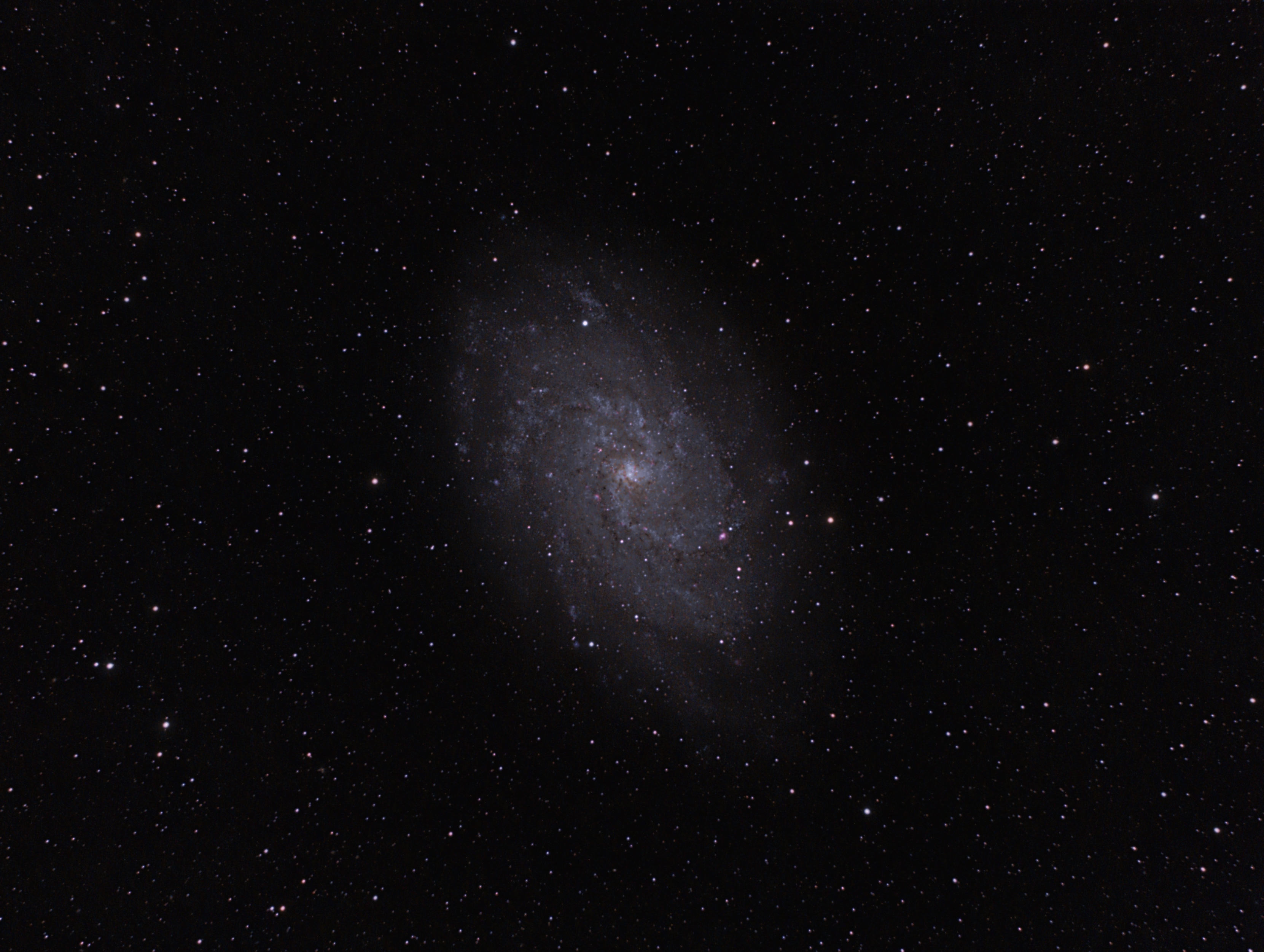M 33
by Alejandro Tombolini
Introduction
Image of Steve Herrman published in Image Processing Challenges - It is 30 x 5 minute images taken with Takahashi FS 78 at 5.9 and an SBIG STF 8300C - Main notes: DBE to remove gradients, contrast with AdaptiveStretch protecting with a rangemask, TGVInpaint to correct background and star reduction. Date: September 2015
Processing
Sometimes it can be useful to align the channels among them to correct effects caused by the optic of the telescope.
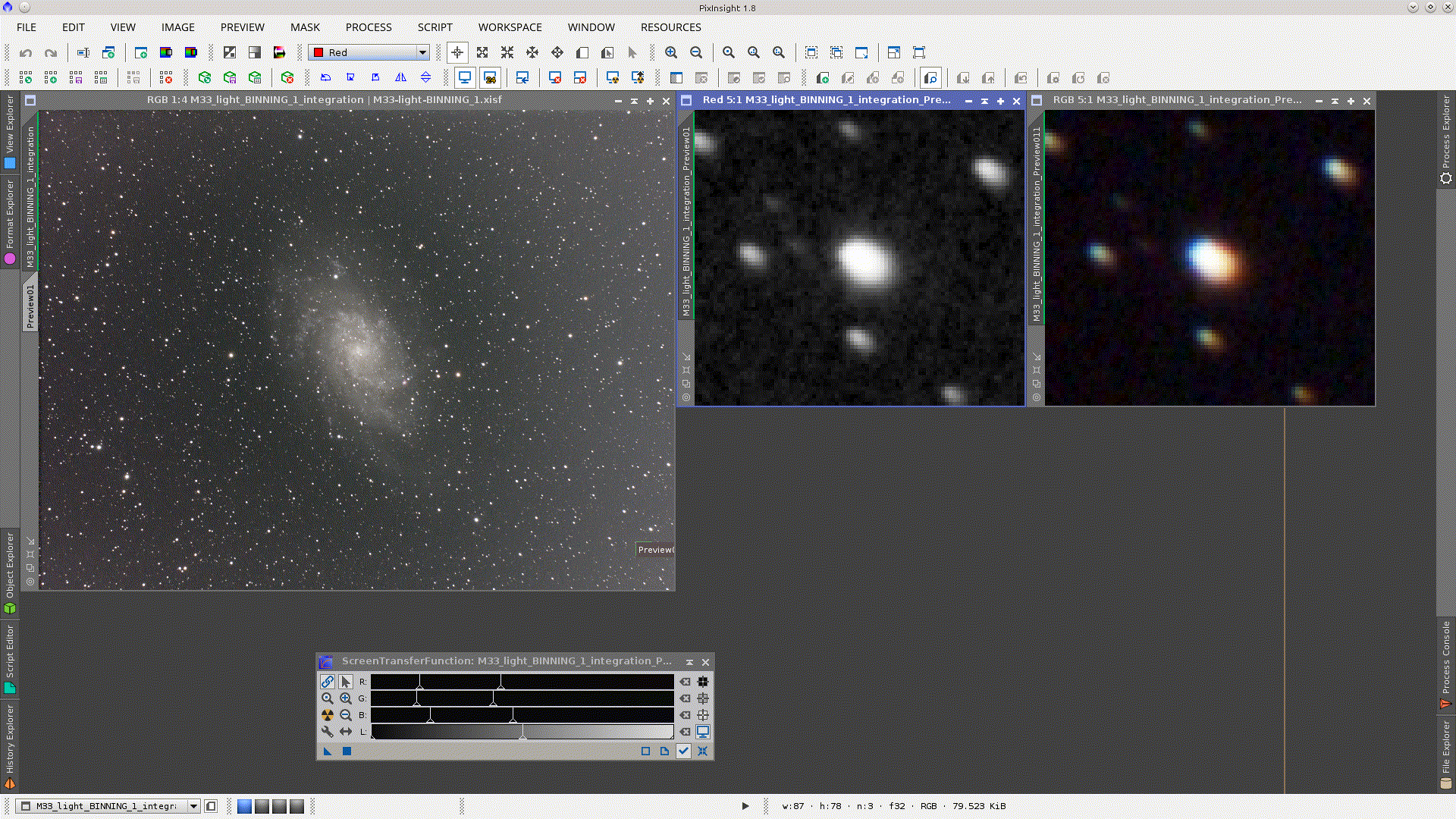
For this first extract the _R, _G, and _B channels and use StarAlignment to align them choosing one as Reference Image, example channel _B, and the other as Target Images. This will generate two new images for both channels that are registered to the Reference image.
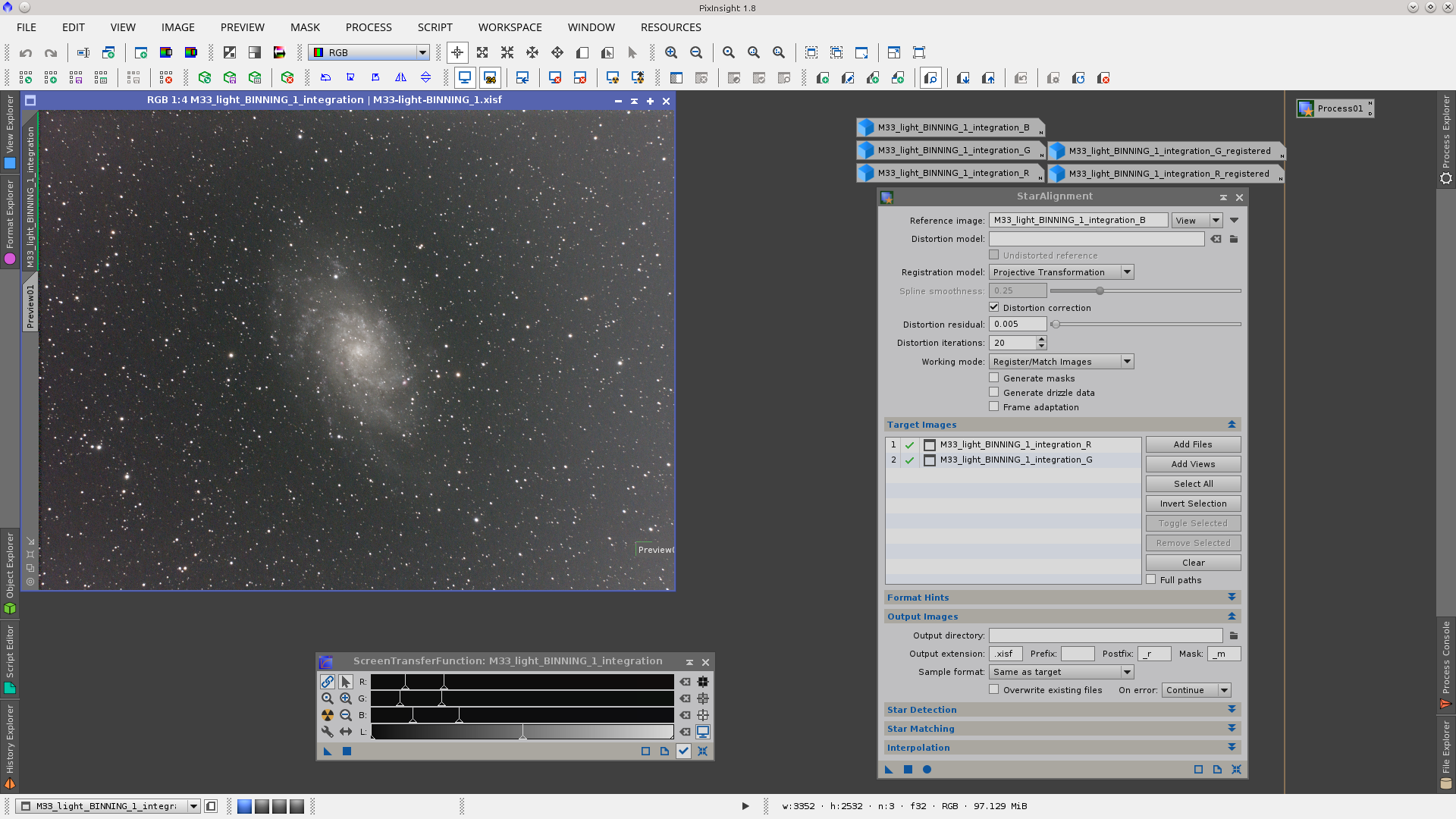
Using ChannelCombination tool select the registered _R and _G channels and the original _B channel and Apply Global (F6)to generate the image.
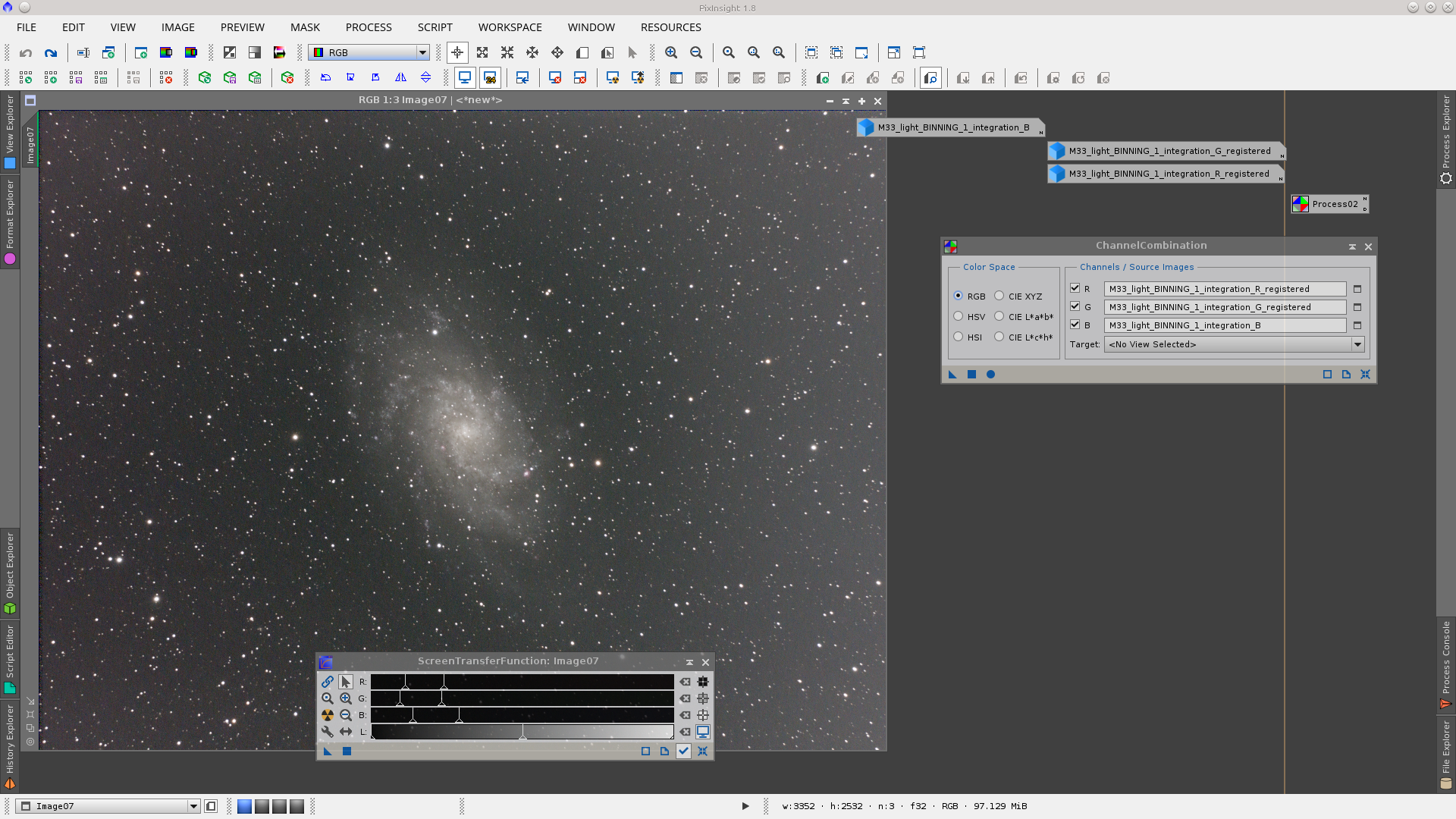
DynamicBackgroundExtraction to correct the gradient. As the gradient is additive select Subtraction to correct the target image.
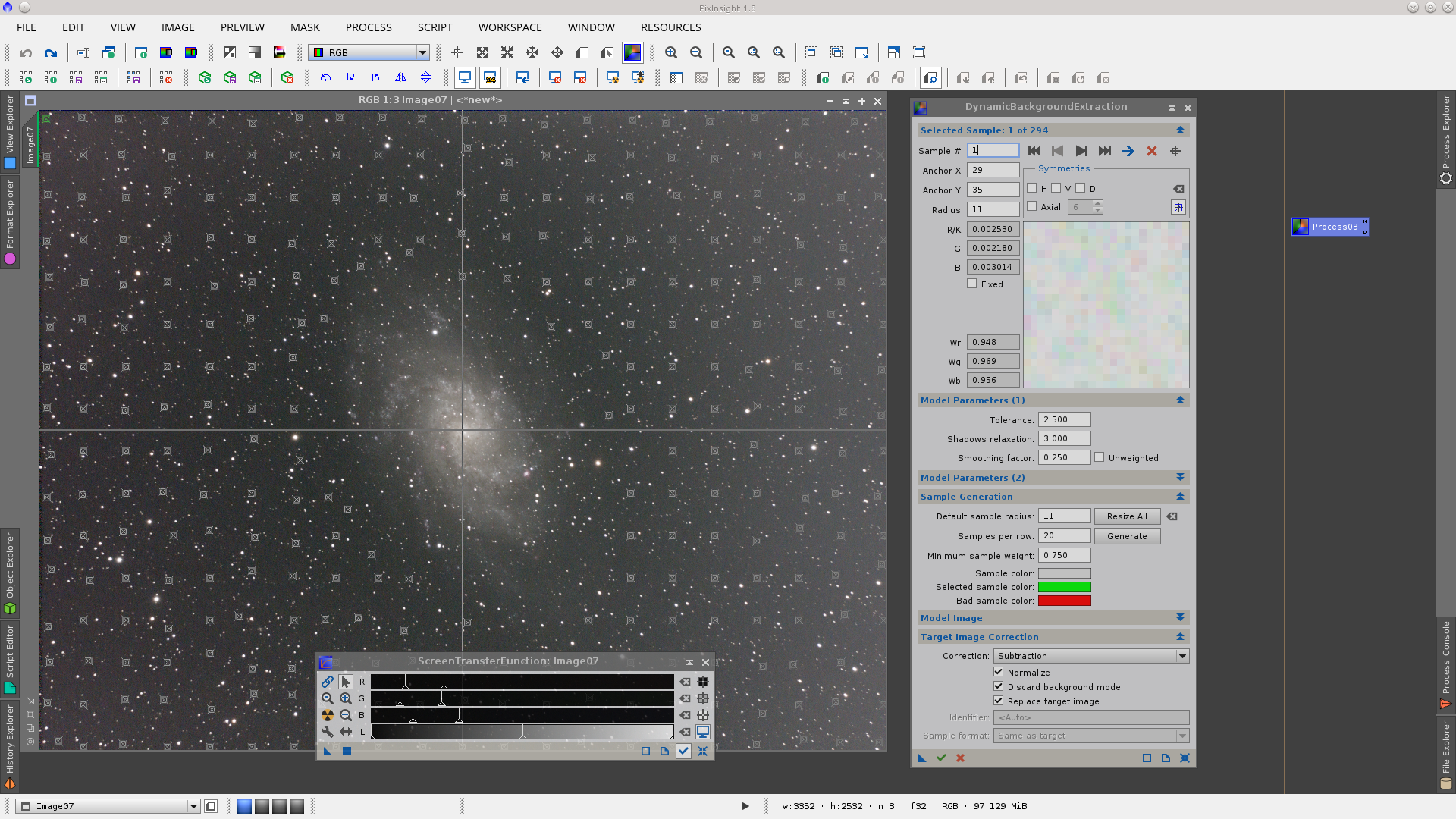
Neutralization of the background and calibration of the color. Select a small preview that represent the background of the image and use it as reference image in BackgrounNeutralization tool and in ColorCalibration. Set the Upperlimit in both tool conveniently reading on the image with the cursor or checking the values with Statistics tool.
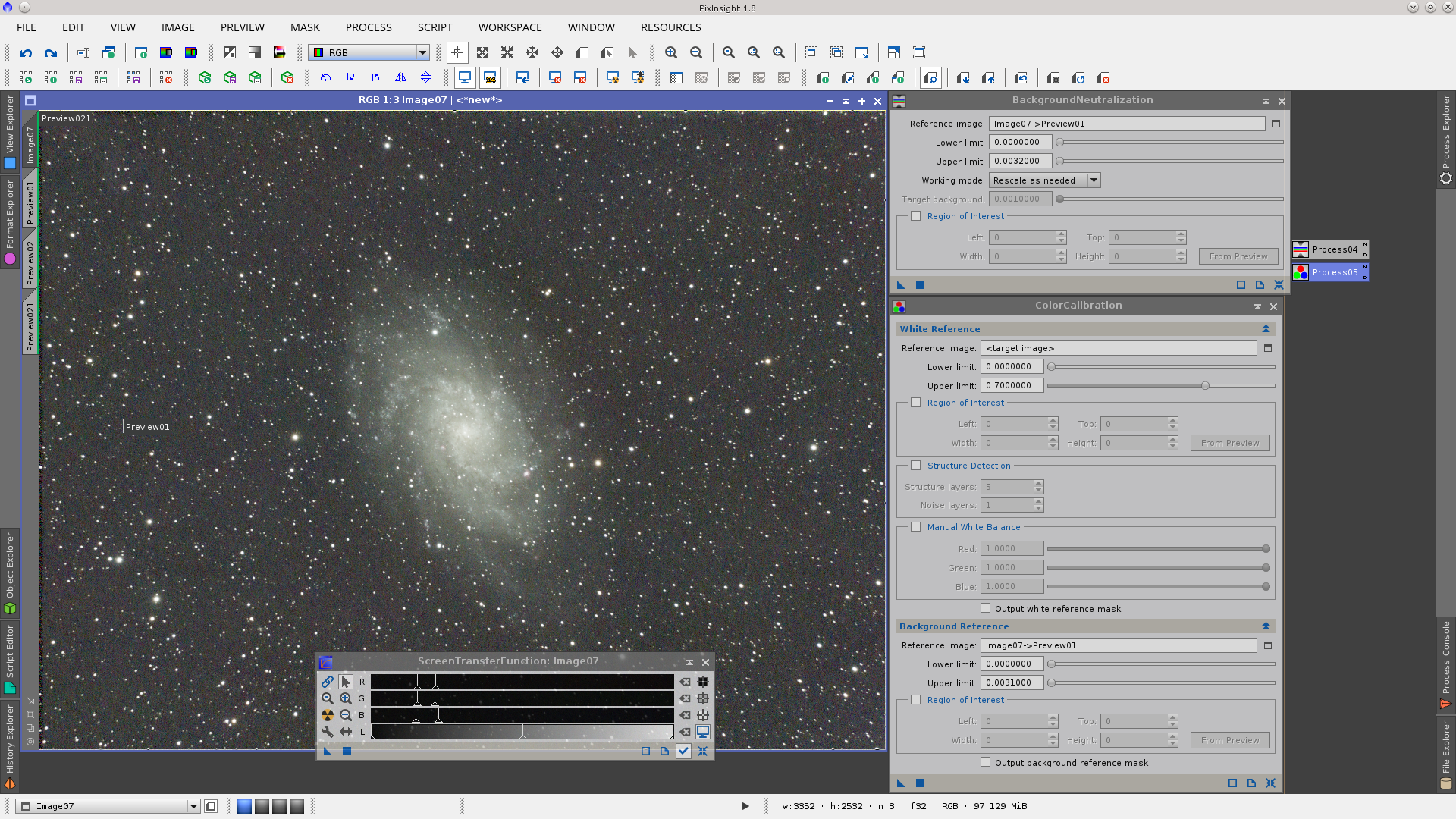
First non linear stretch of the image using HistogramTransformation tool
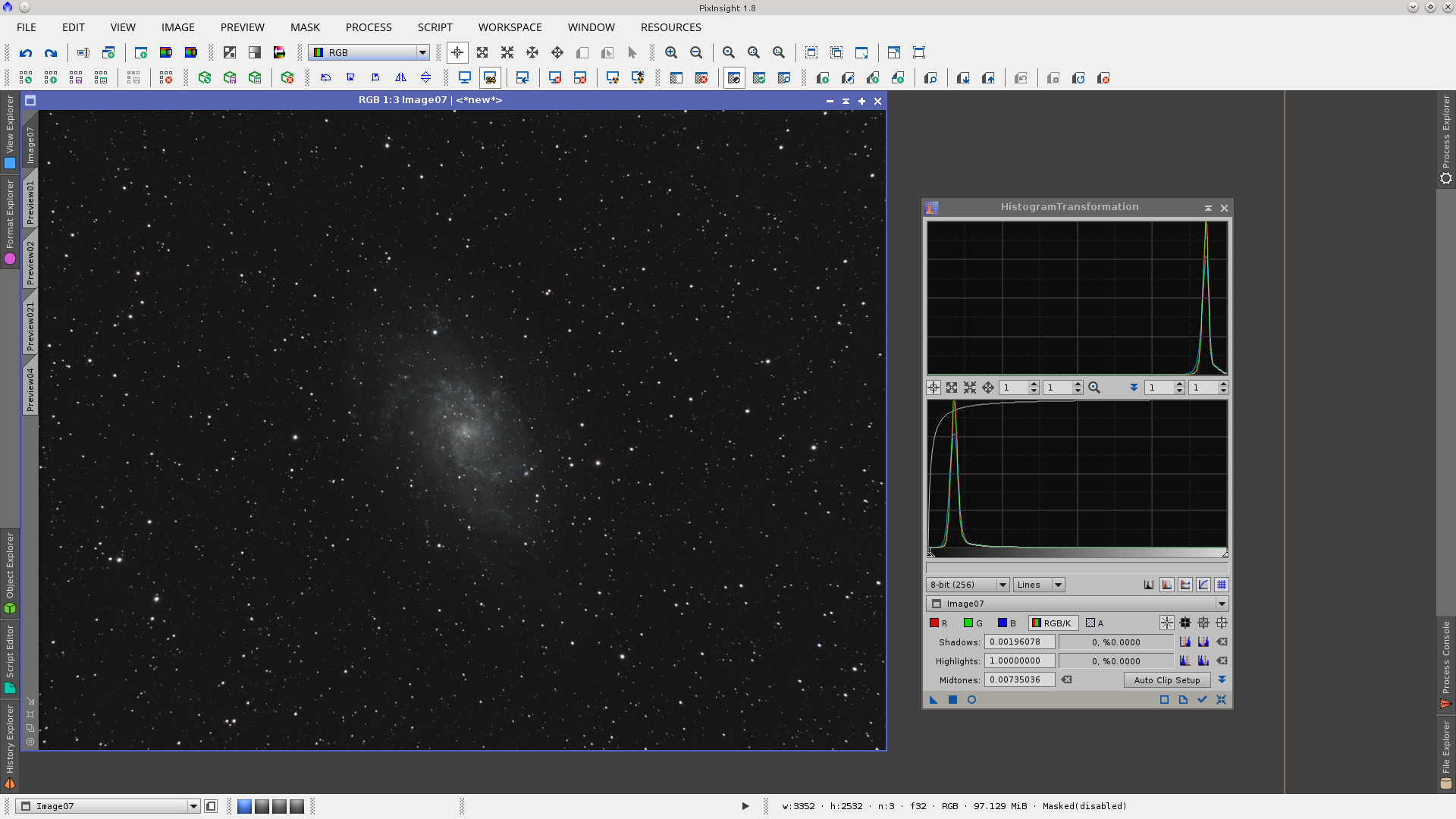
I will try to avoid the grow of the star halos protecting them and reducing them with different tools. Use the script ExtractWaveletLayers to extract layer _01 and the residual
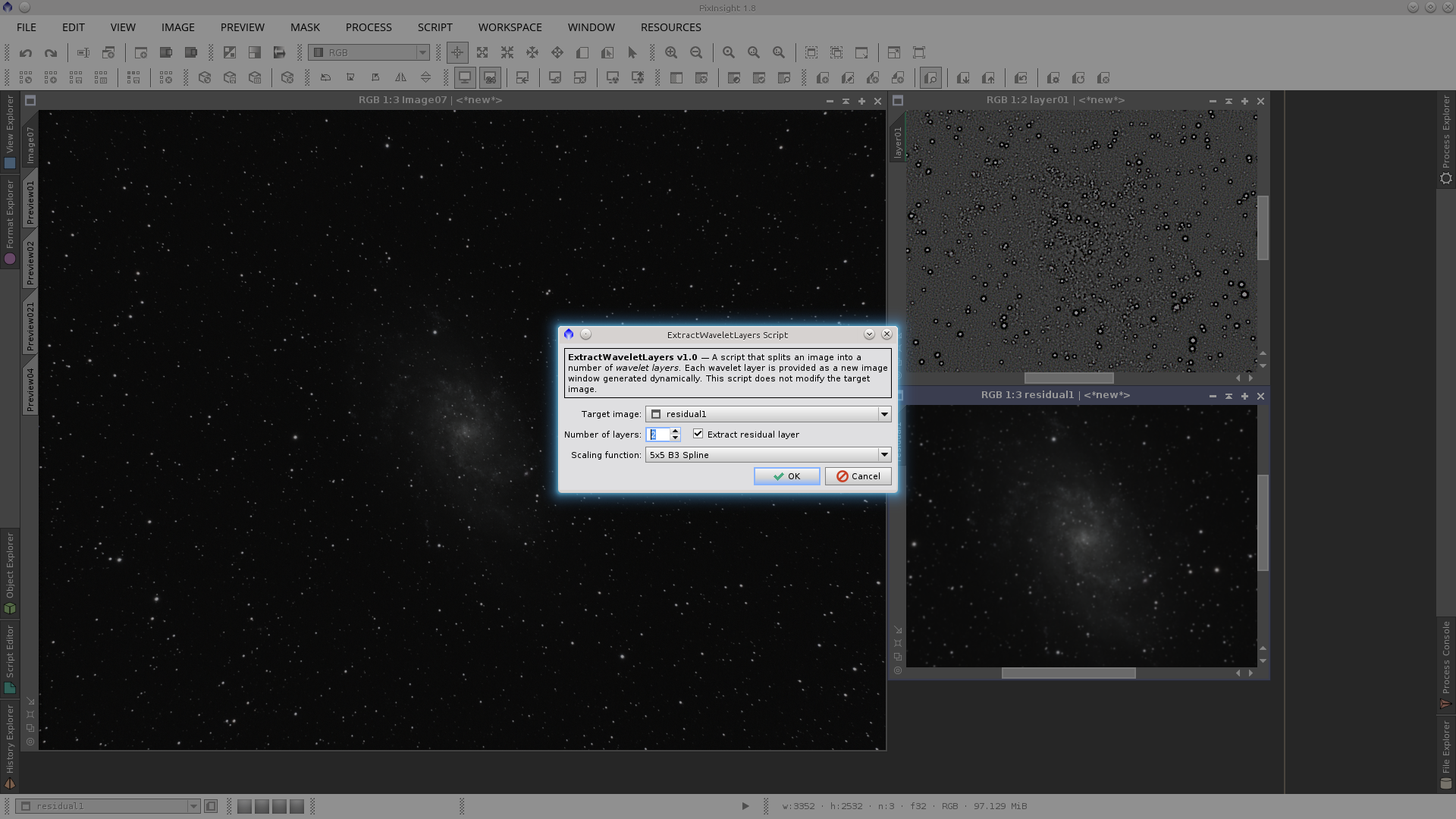
Use Layer_01 as mask protecting the galaxy and without protecting the stars halos and decrease mildtones softly with HistogramTransformation tool.
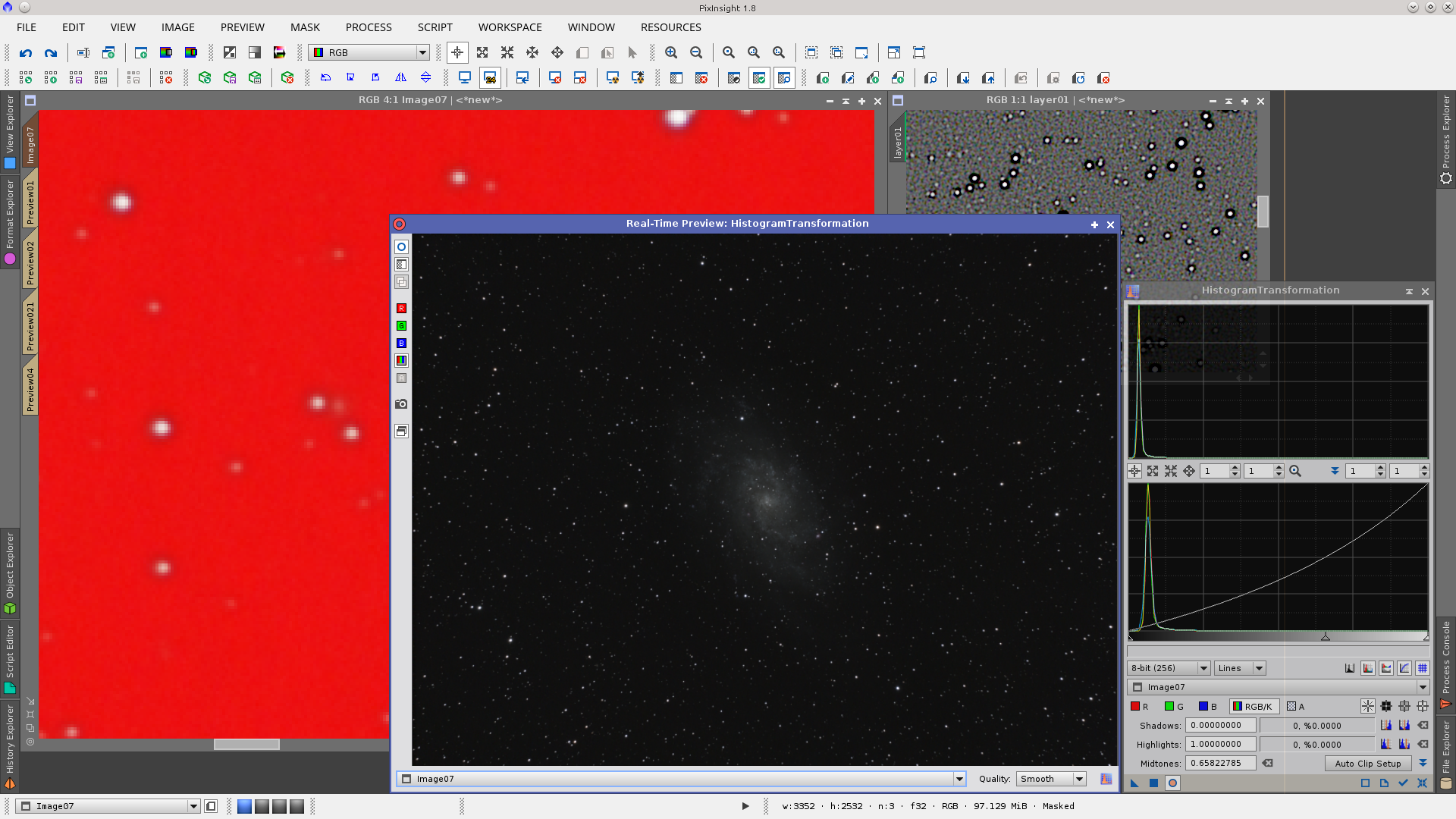
Use Residual as mask protecting the galaxy and increase mildtones softly with HistogramTransformation tool
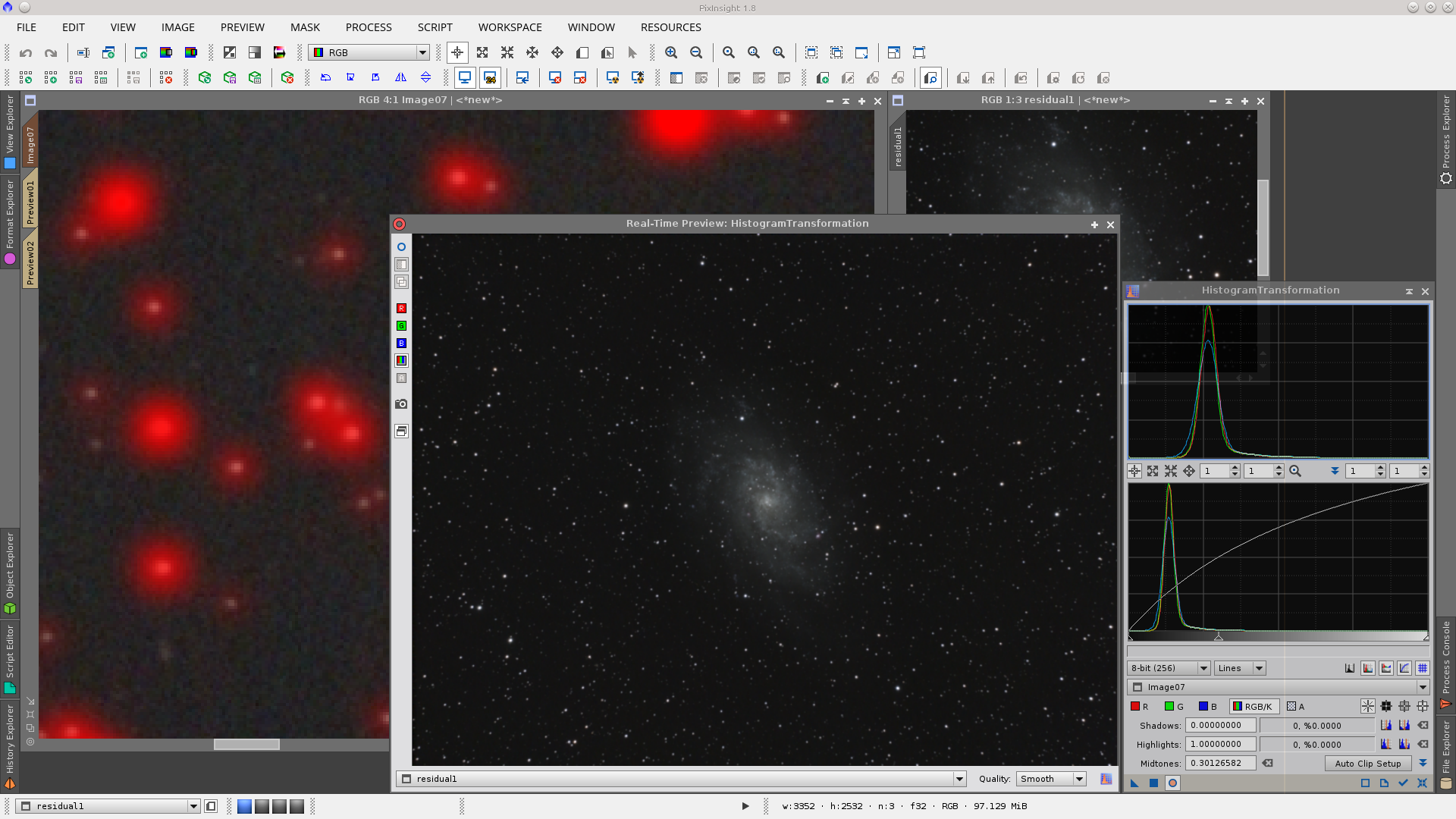
With Starmask tool generate a starmask to protect stars while applying HDRMultiscalTransform to compress the dynamic range of the image and increase details in the galaxy. Note that the starmask has a lower value of Truncation to ensure good protection on the stars cores as HDRMultiscaleTransform affect the cores if not well protected.
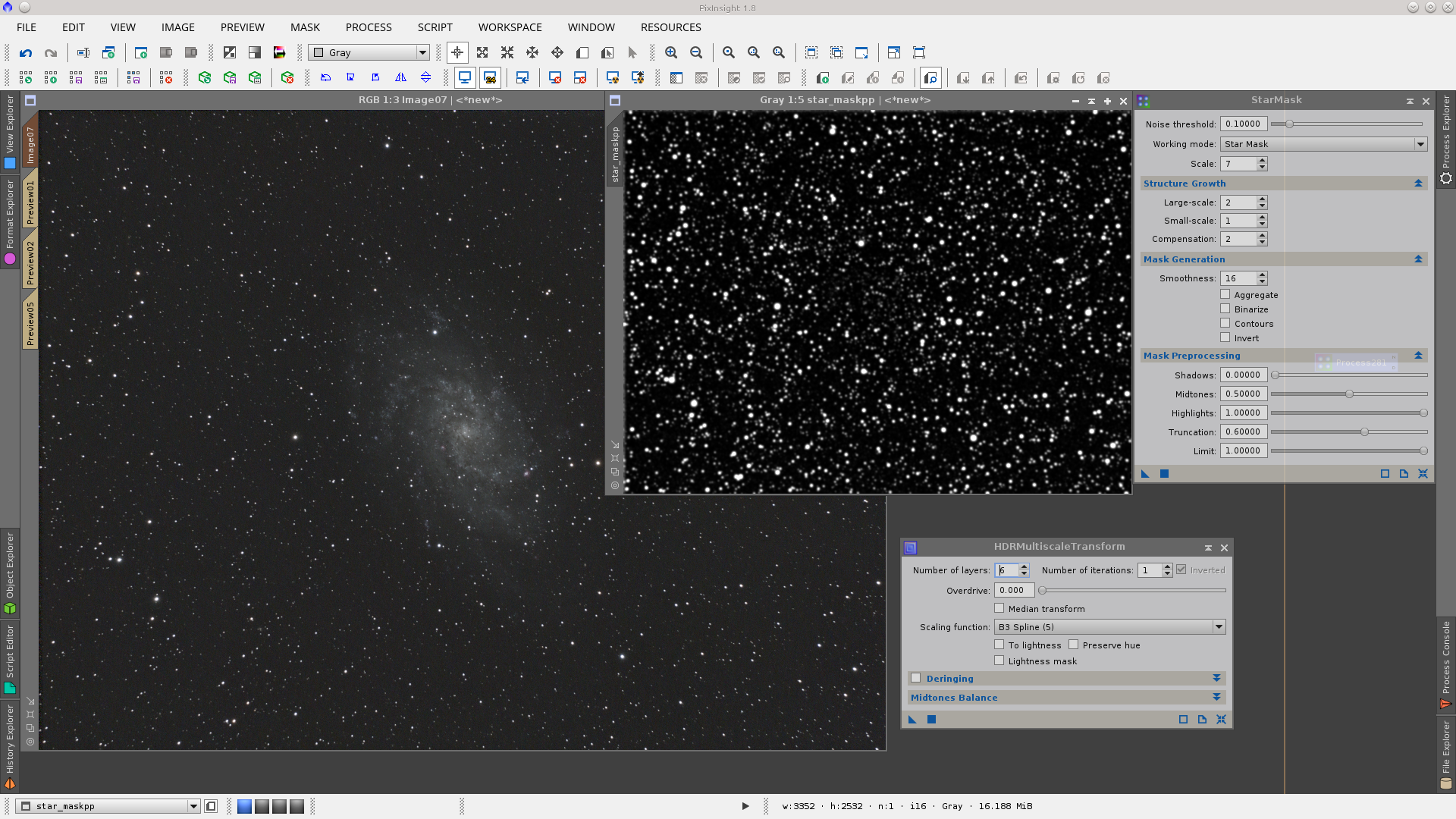
Reduce stars halos protecting the image with a rangemask that leave the halos of the stars unprotected. Apply Erosion with MorphologicalTransformation tool

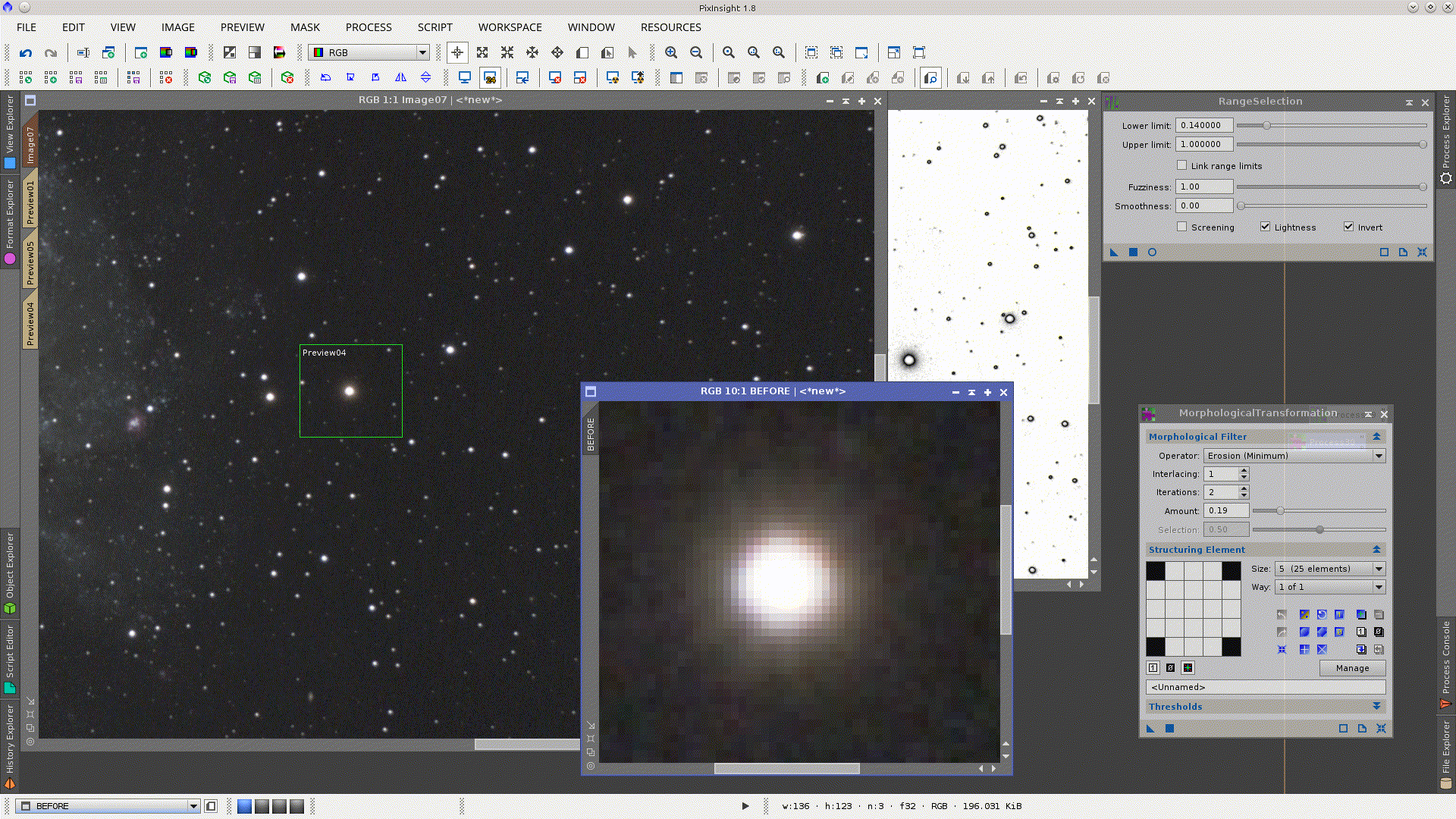
Generate a StructureMask using StarAlignment tool working in Structure Map mode and smoothness it a little deleting two layer en MultiscaleLinearTranform tool.
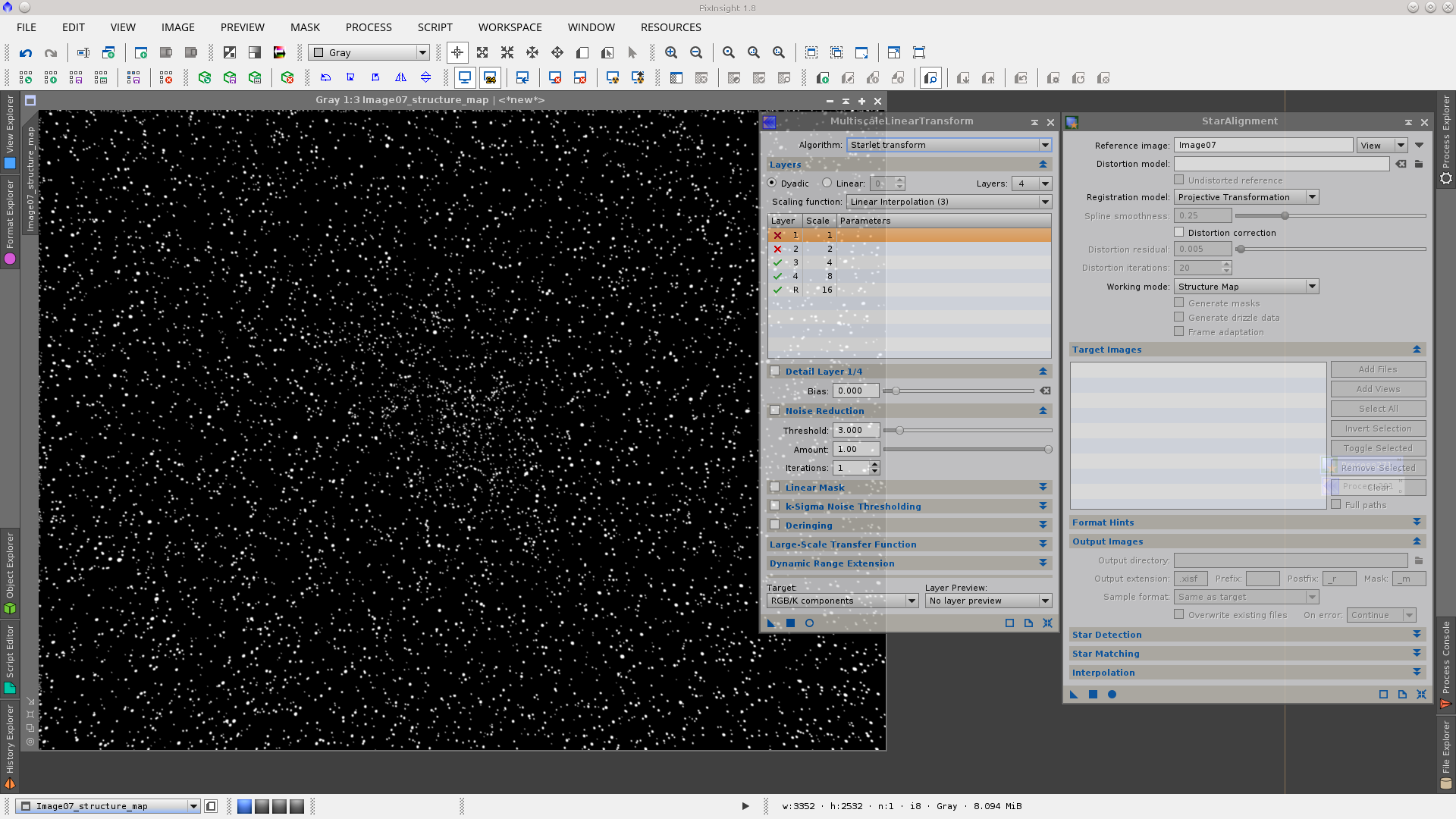
Noise reduction and increase details in the small layers to highlight structures protecting the stars with the previous mask.
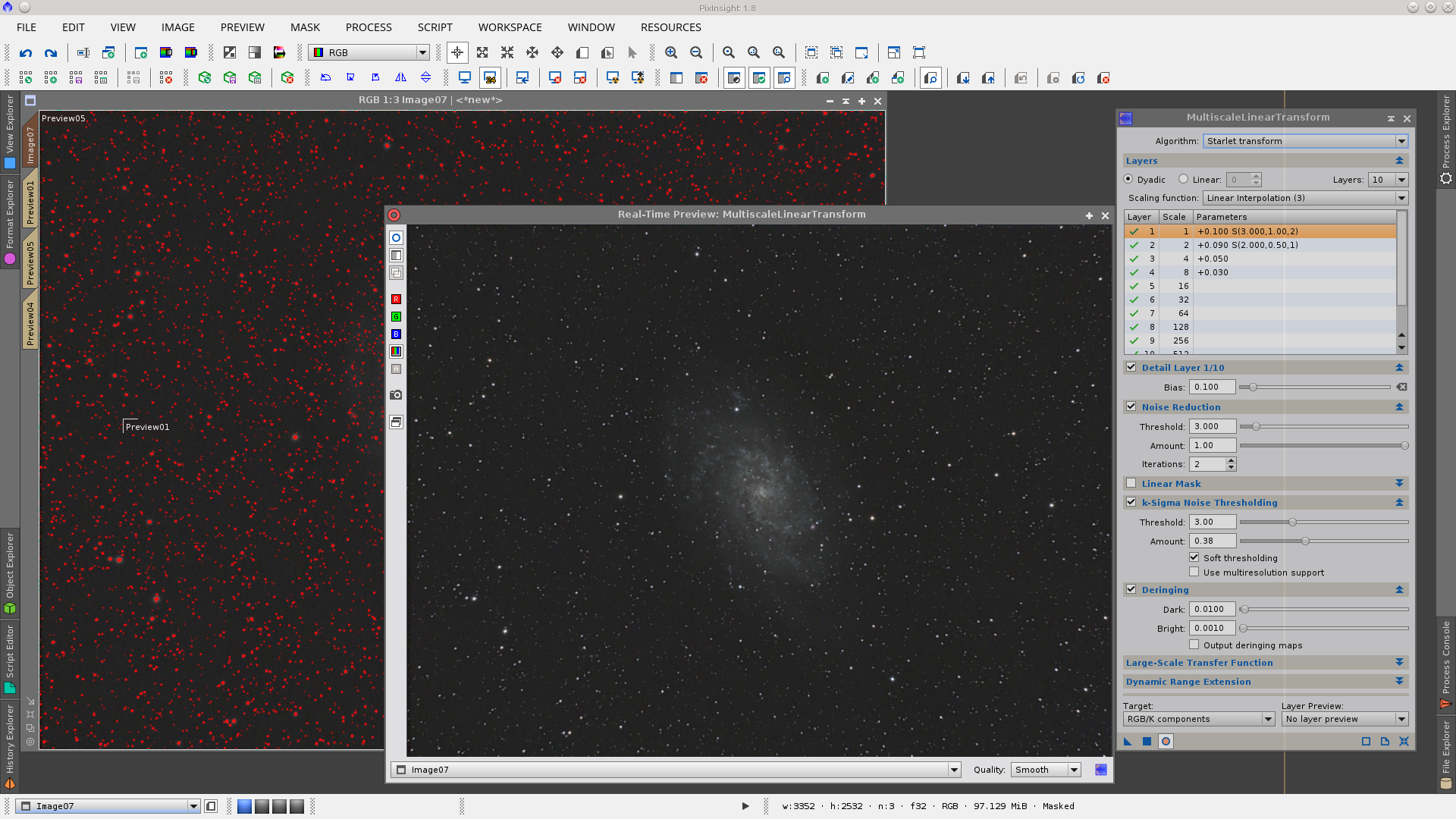
Saturation of the stars and small structures of the galaxy with MultiscaleLinearTransform and protecting with structure mask.
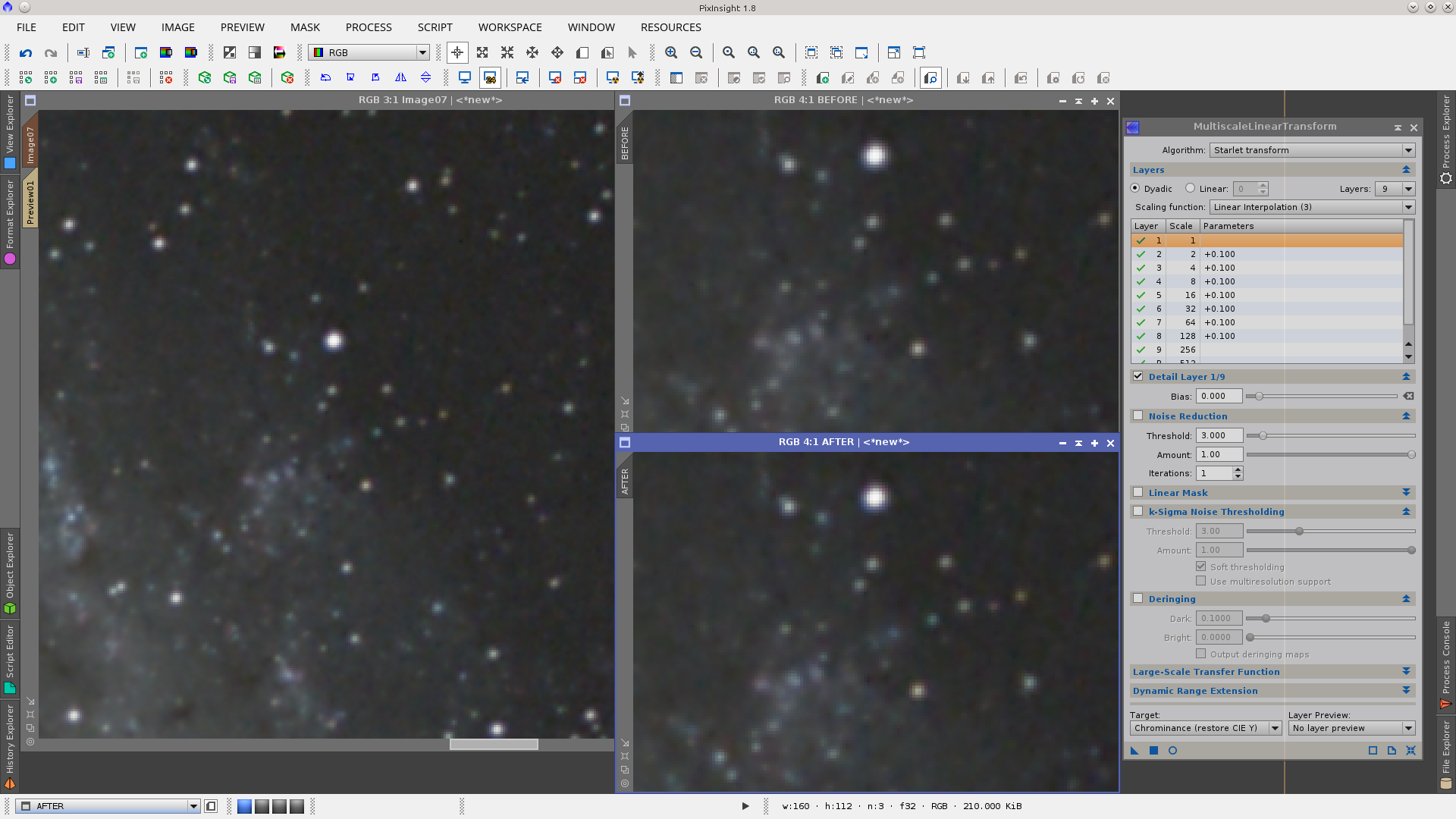
New star reduction with MorphologicalTransforamtion and protecting the galaxy with strcuturemask.
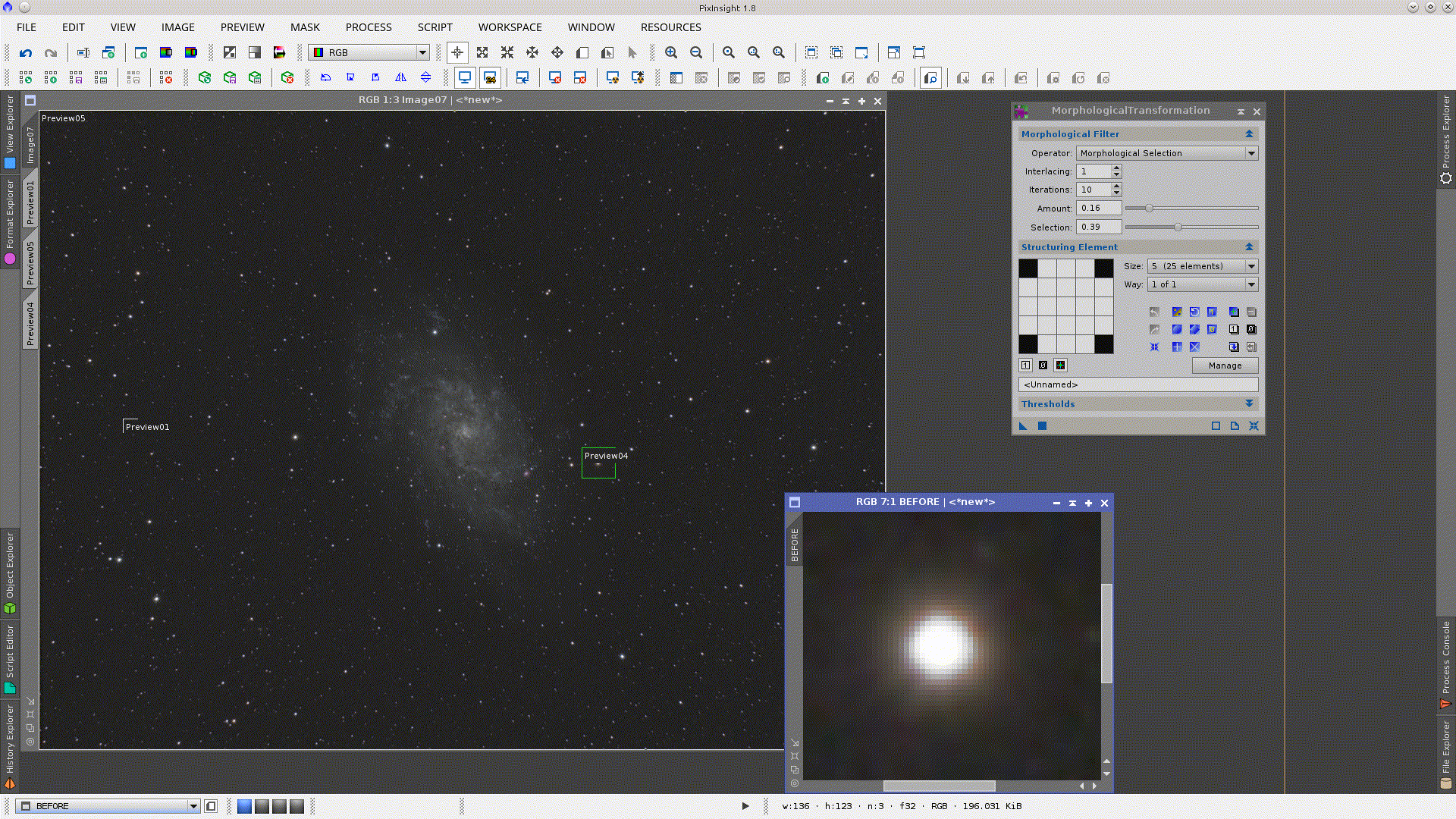
Now I will start a series of processes to give more contrast using different masks.
Generate rangemask1 and reduce the background level with GammaStretch protecting the galaxy.

Generate rangemask2 and stretch the galaxy with AdaptiveStrech protecting the background.
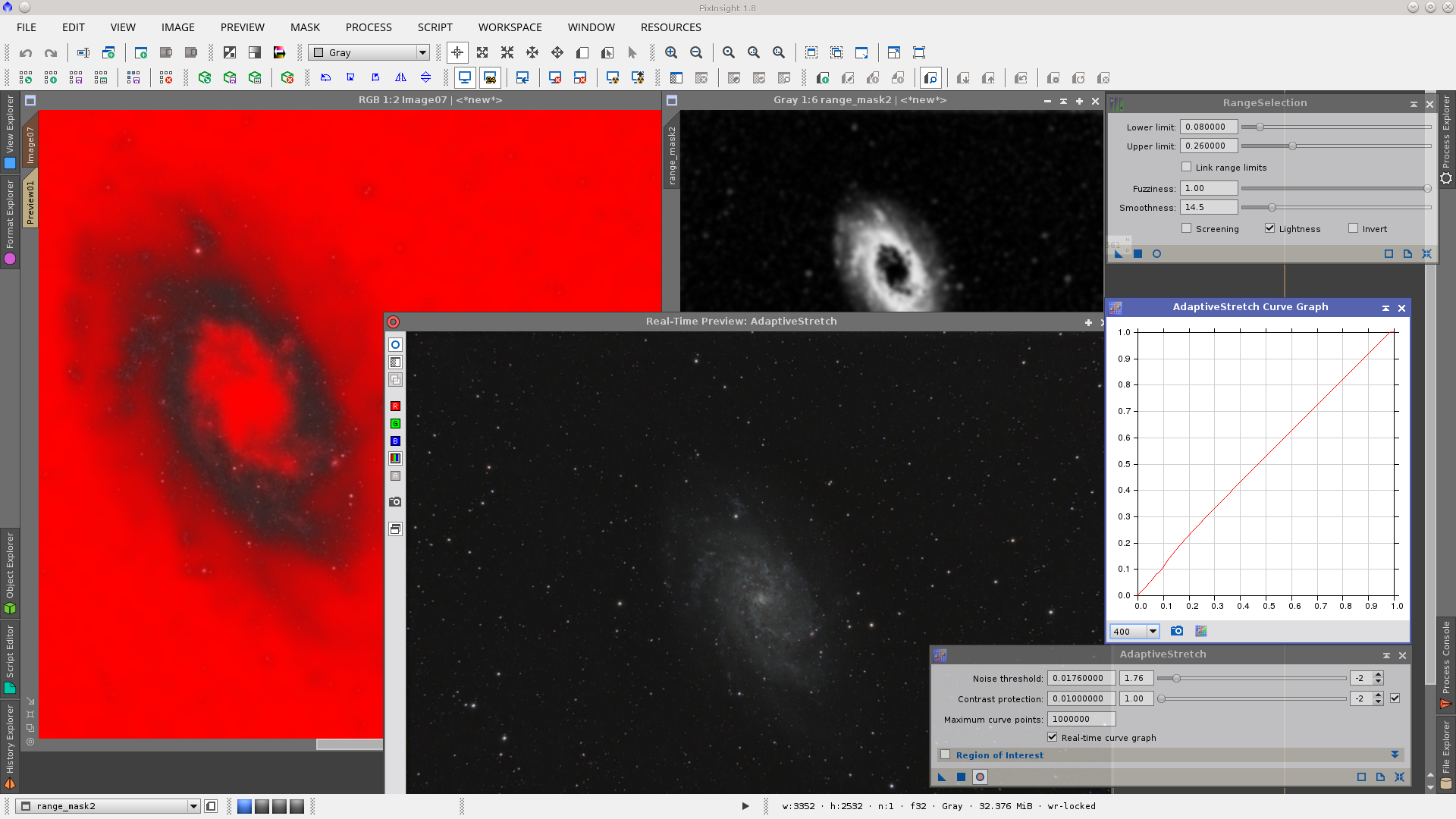
Generate rangemask3 and stretch the galaxy with AdaptiveStrech protecting the background.
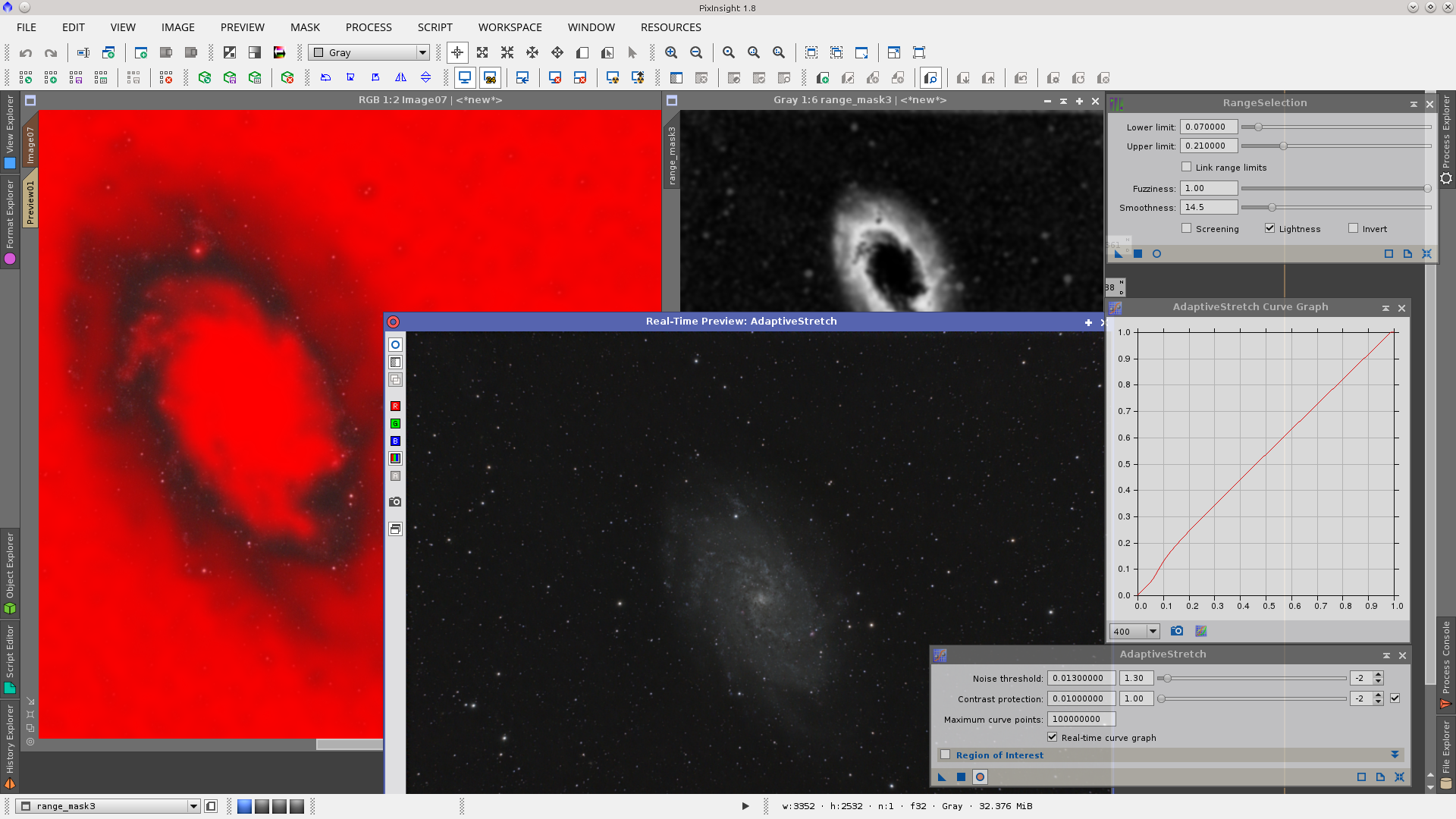
Generate rangemask4 and compress the dynamic range of the outer halo of the galaxy with HDRMultiscaleTransform portecting the background and the rest of the galaxy.
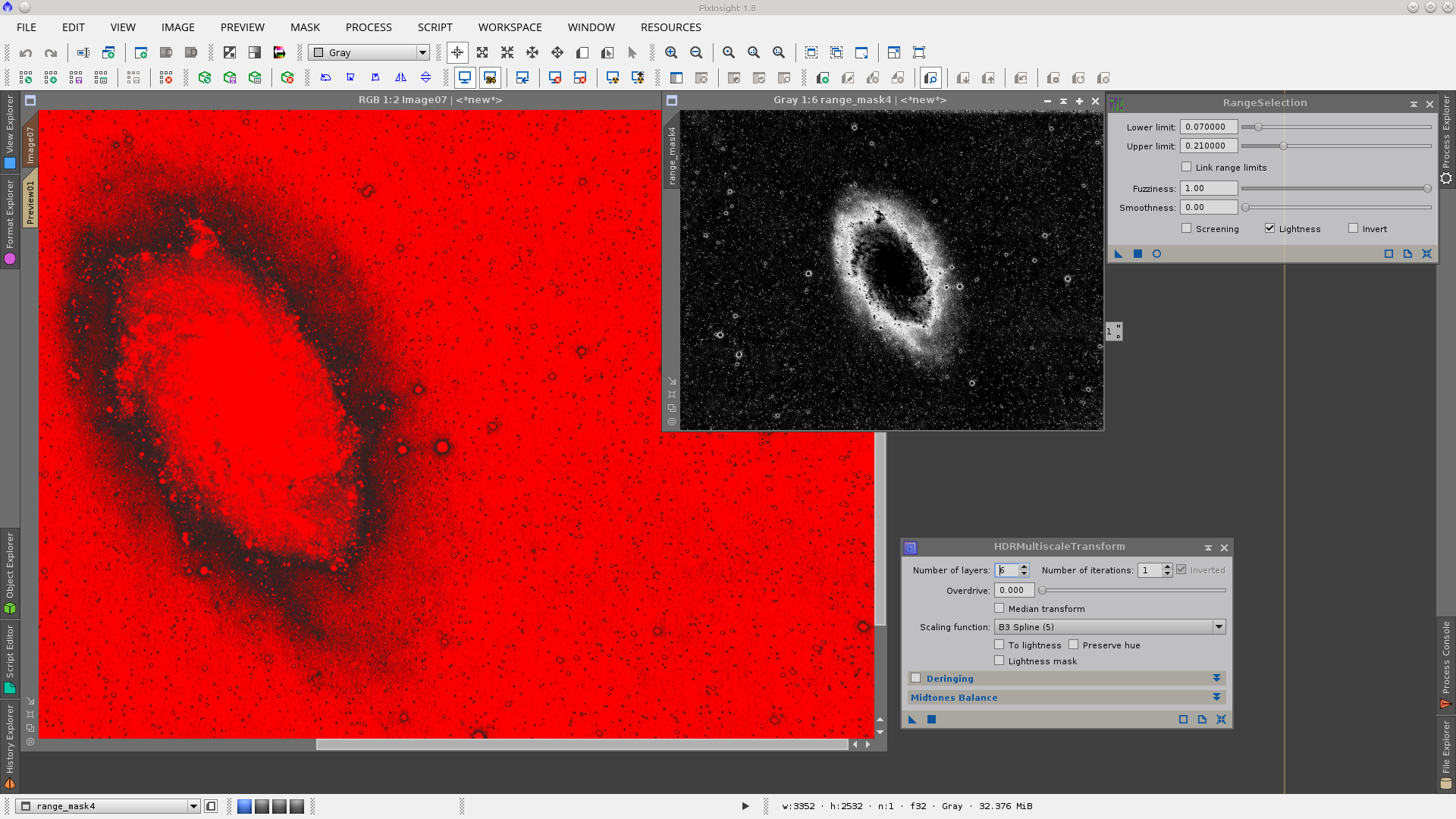
Generate rangemask5 and smoothness the outer halo of the galaxy with ExponentialTransformation tool.
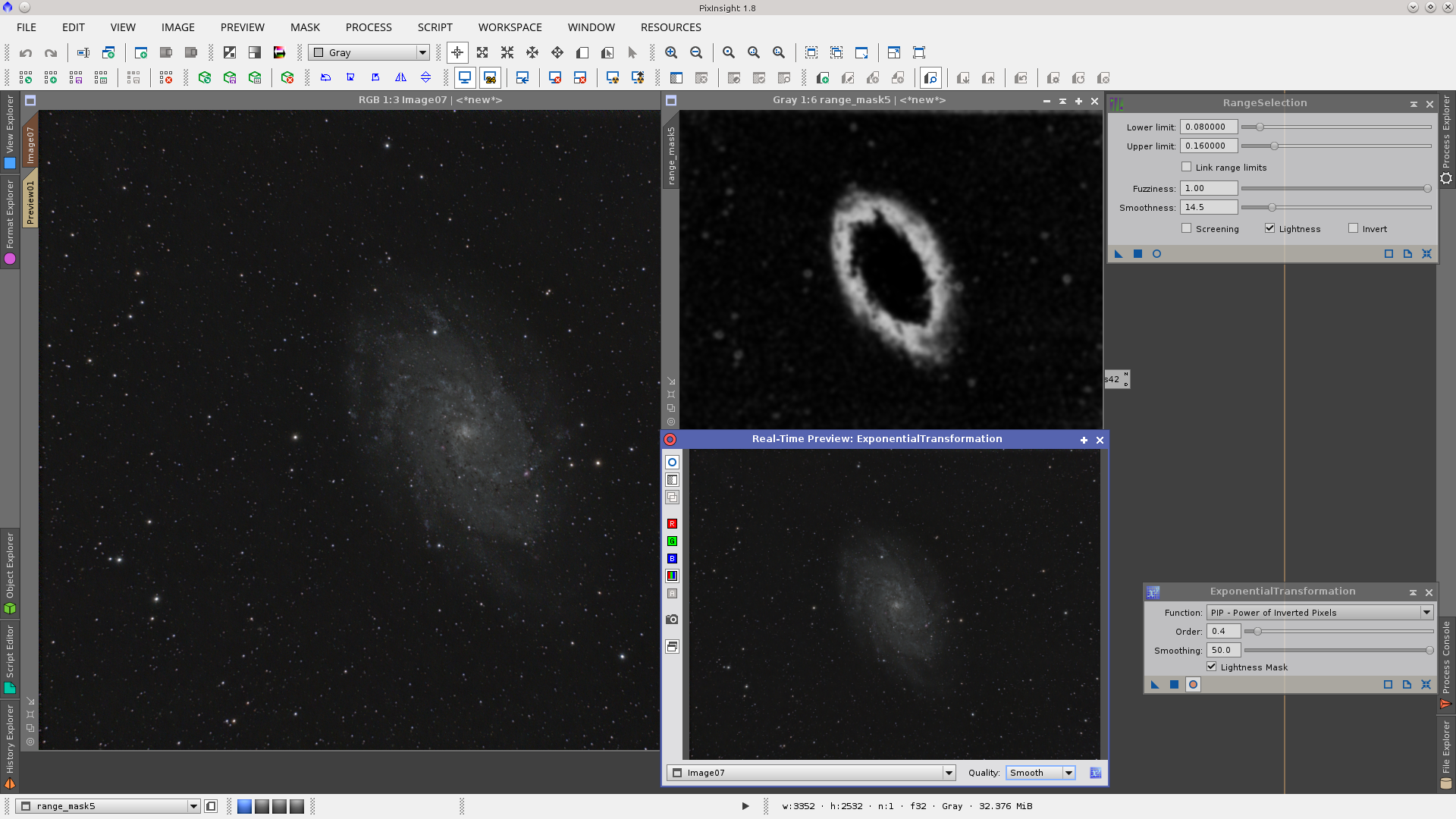
Noise reduction to Green
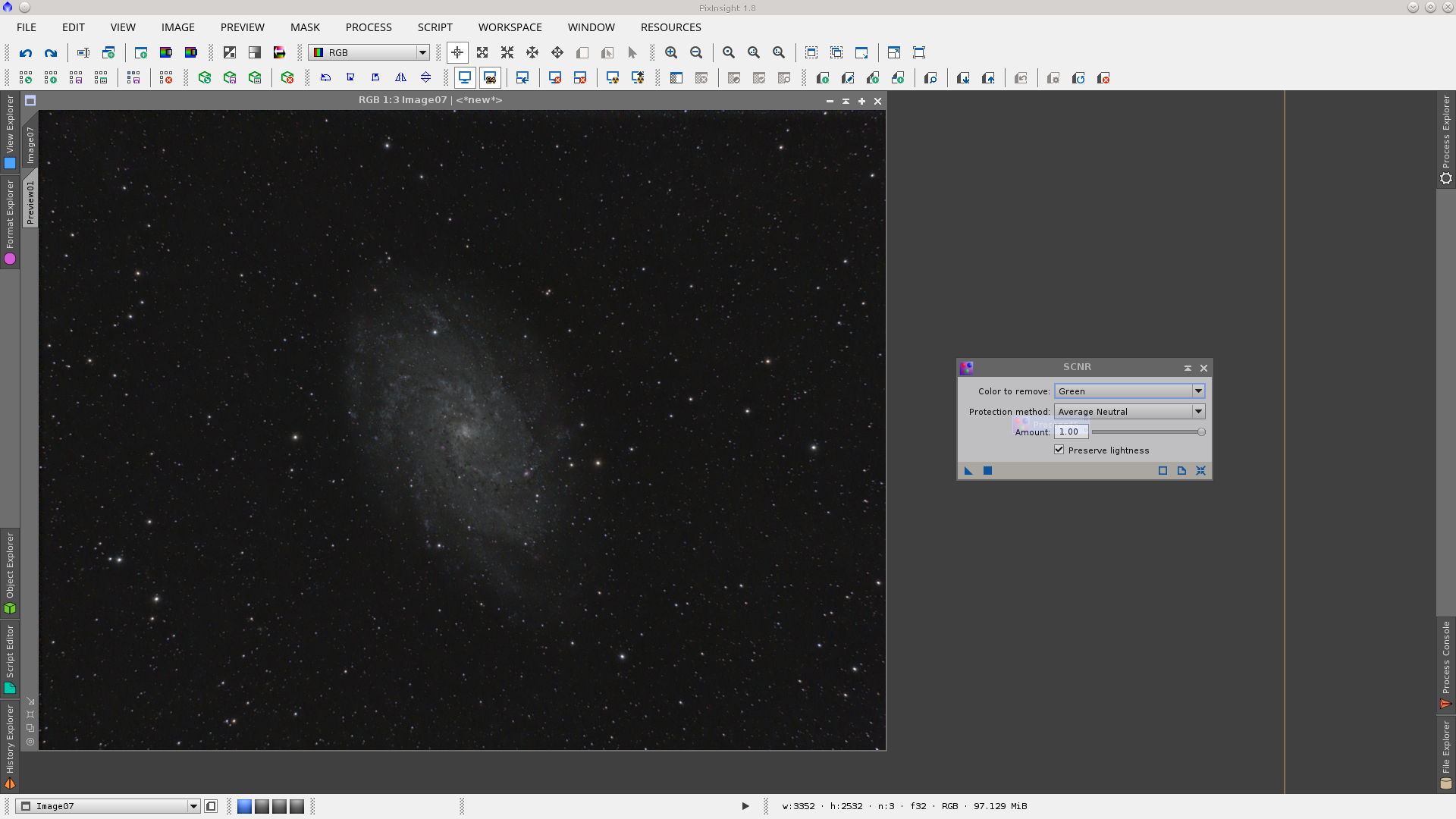
Extract channel _X with ChannelExtraction tool to use as mask protecting the background and Saturate using InterChannelCuves.
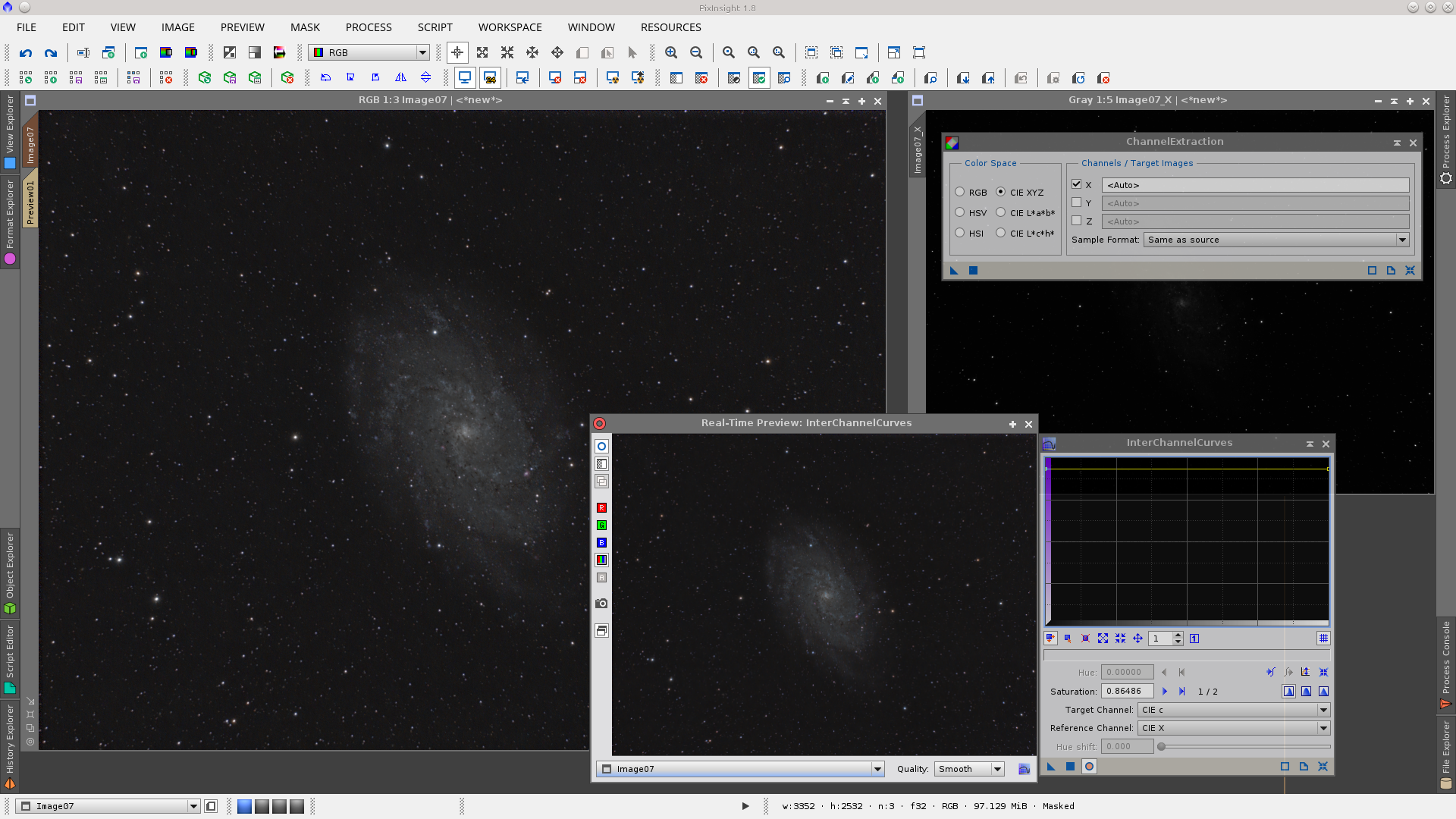
Noise Reduction to Chrominance protecting the background with the same channel_X mask.
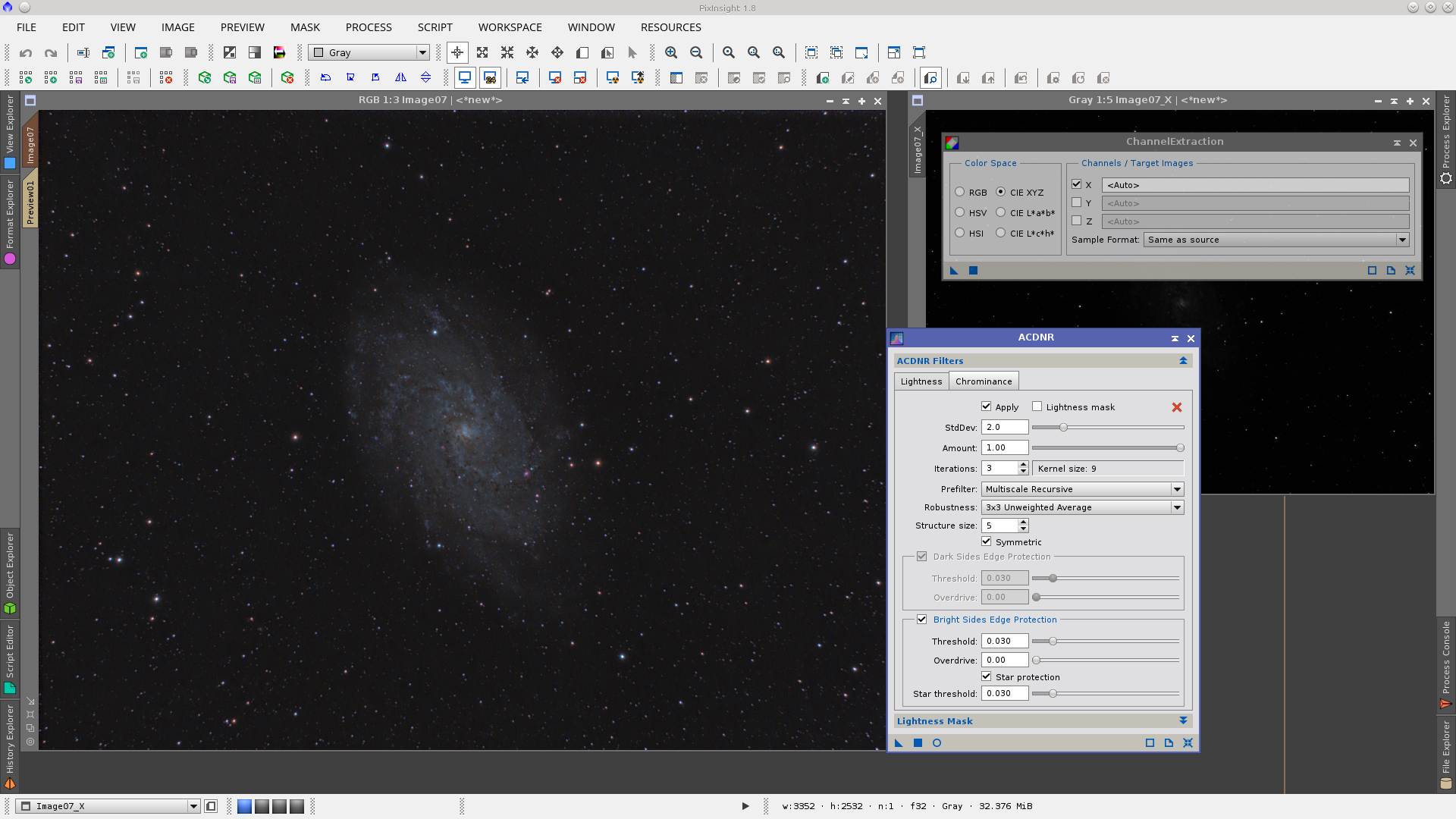
Stretch the galaxy with AdaptiveStrech protecting the background with channel_X mask.
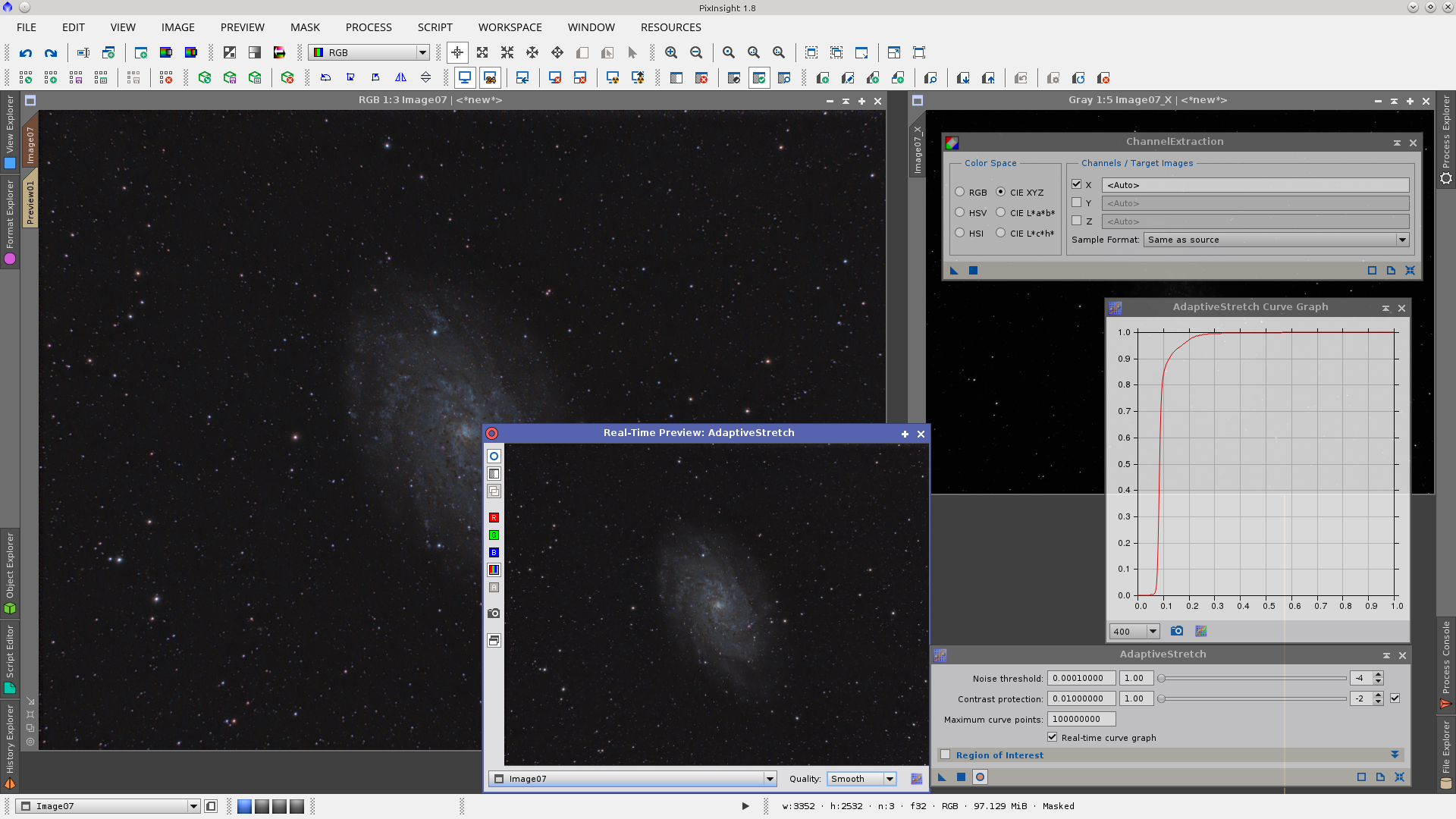
Extract the luminance and stretch conveniently to have a good protection of the galaxy and without protecting the background and use GammaStretch to reduce the brightnes of the backgorund.
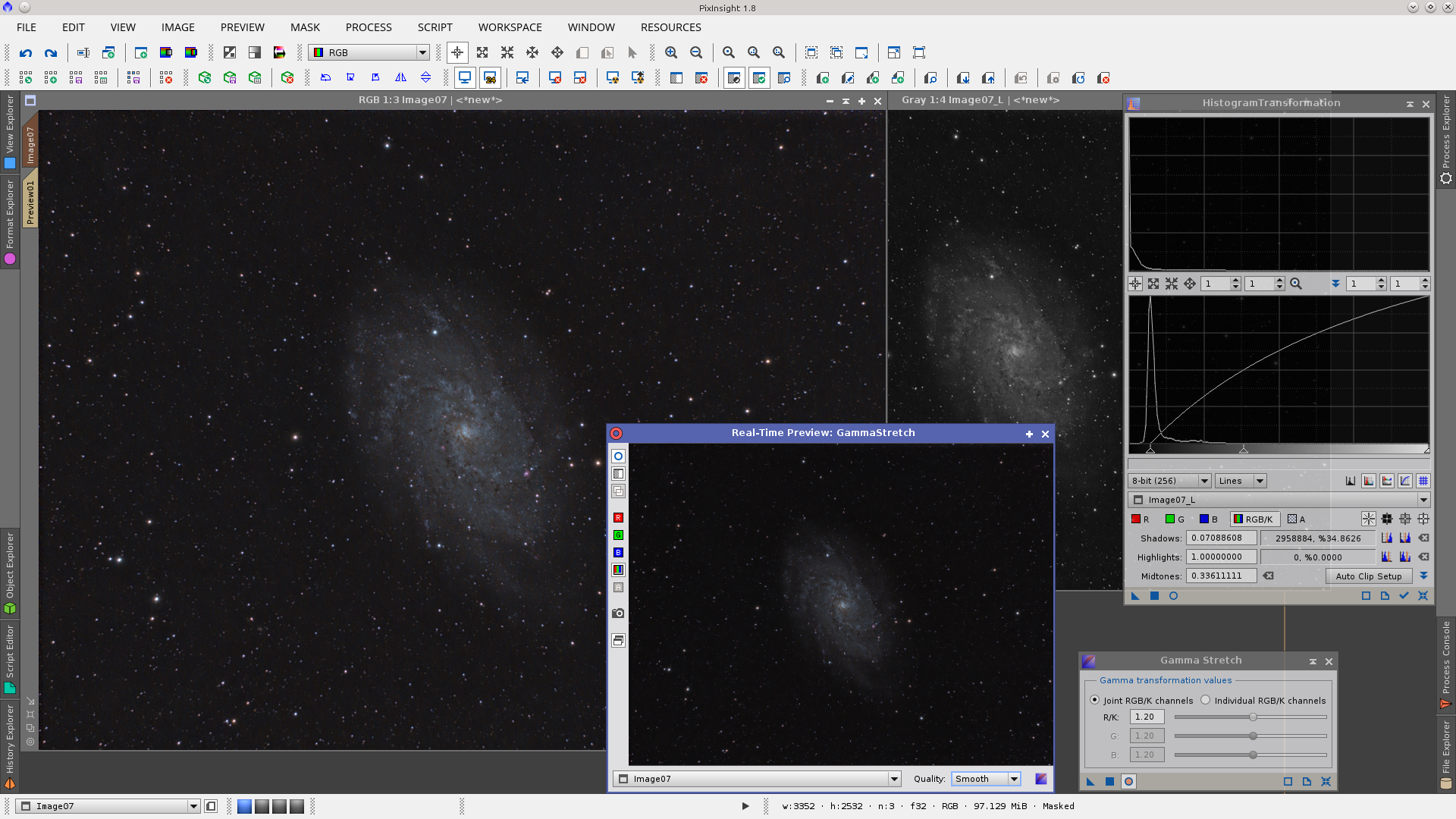
Adjust the curves protecting the background with channel_X mask
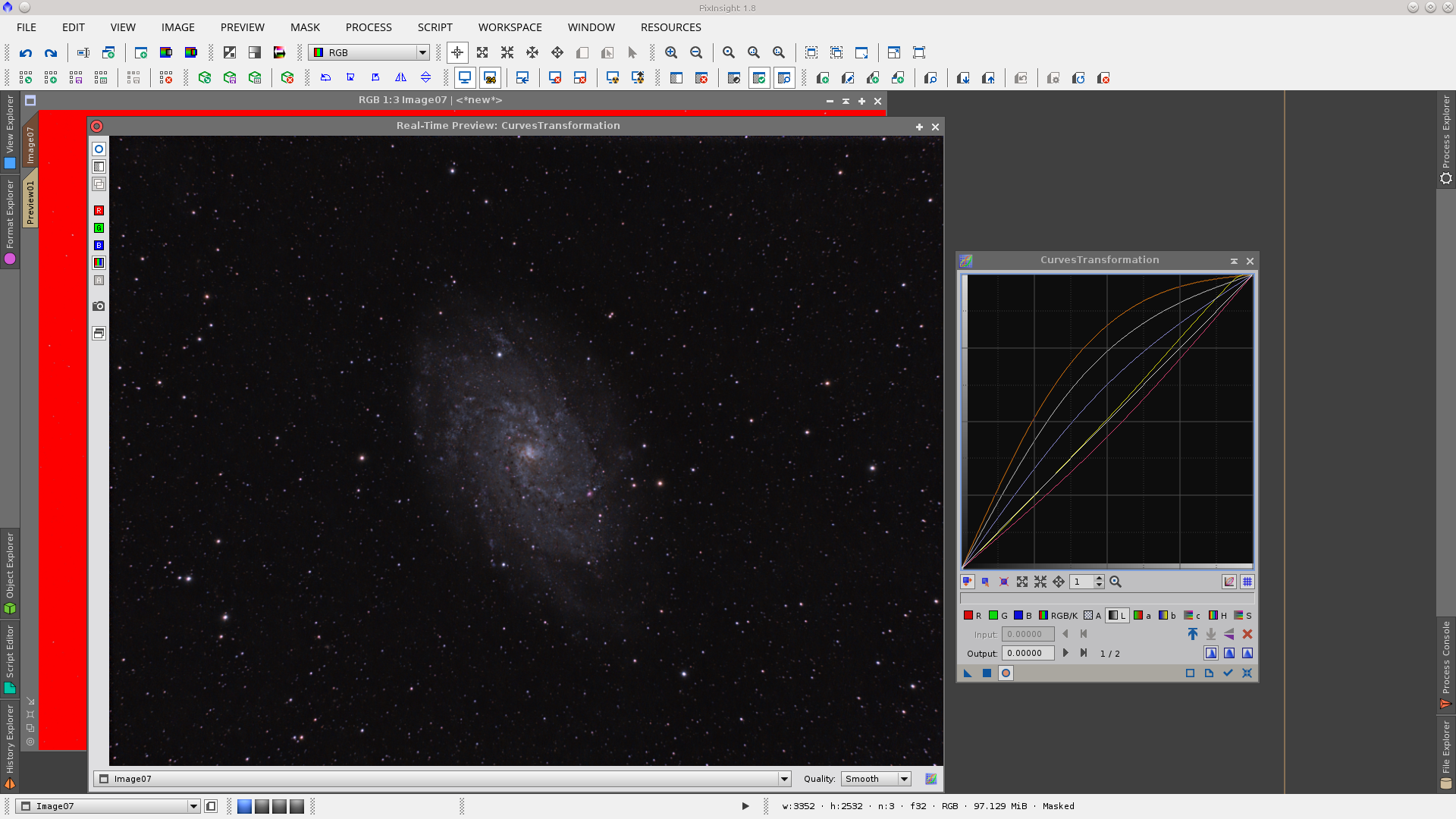
Operating with PixelMath over the existing structuremap and starmask generate a new mask with the halos of the stars to work on them
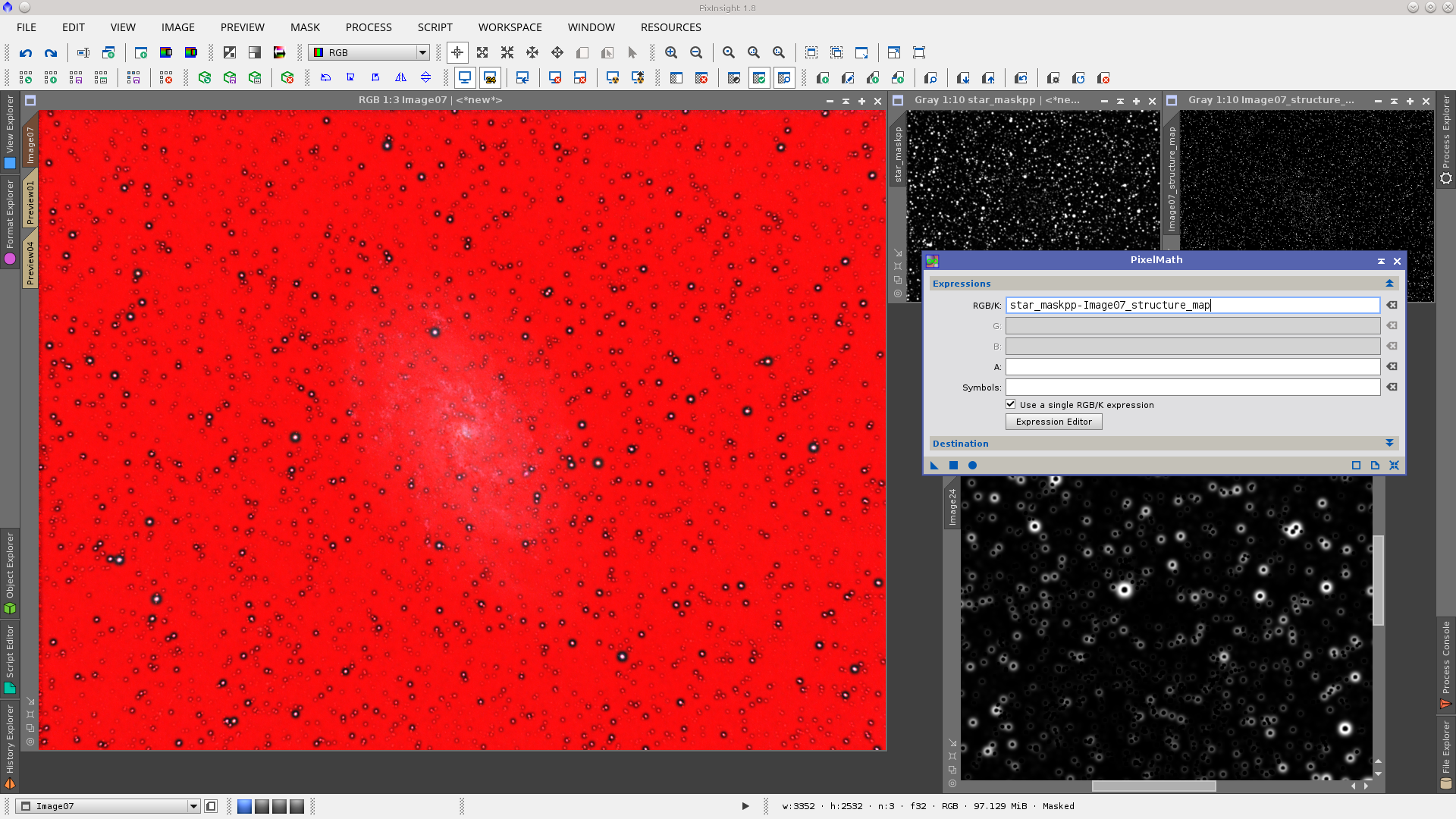
Apply an Erosion over the halos of the stars to reduce its bright.
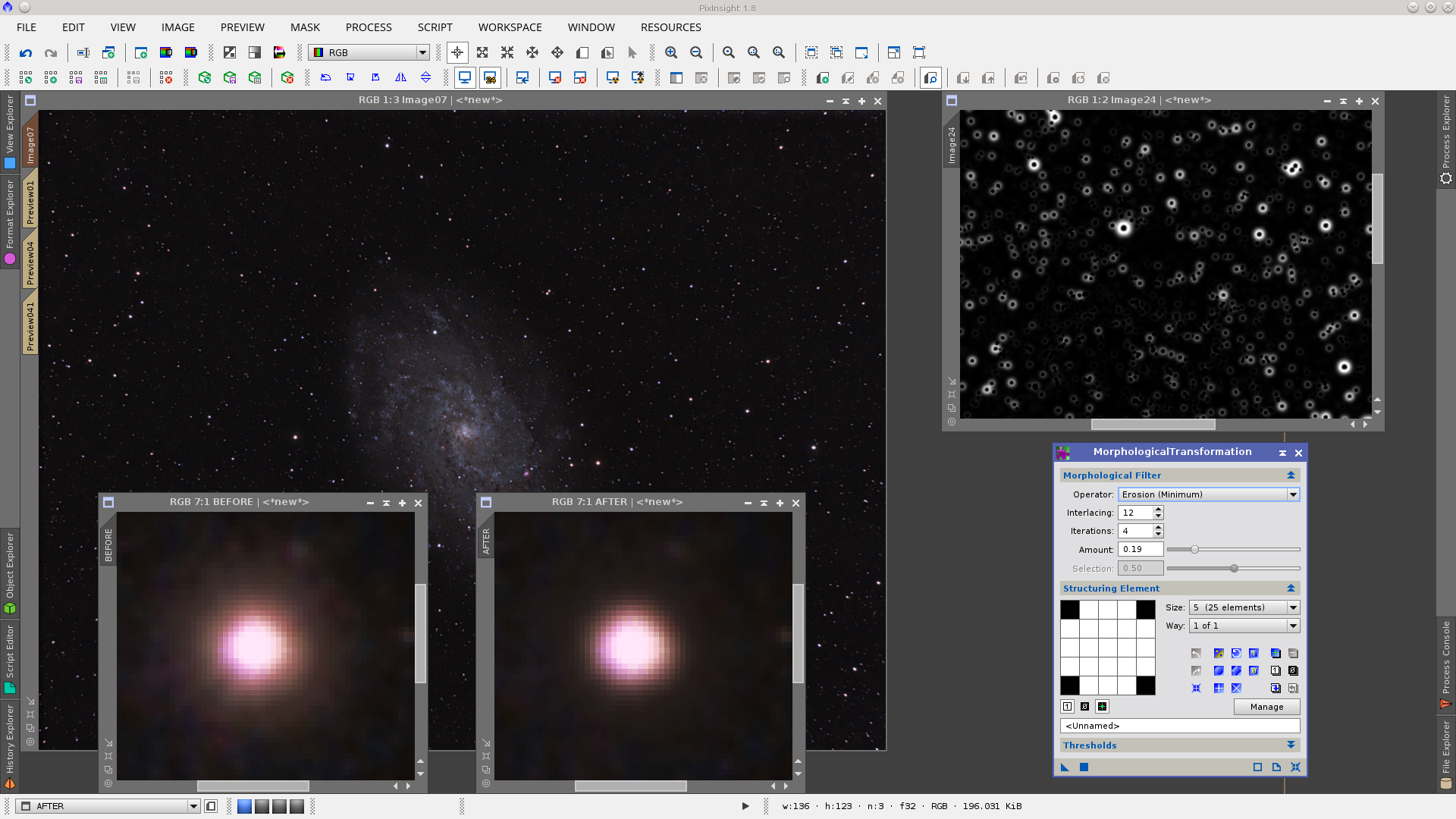
Generate another starmask that include big stars and apply a blur over the cores of the stars.
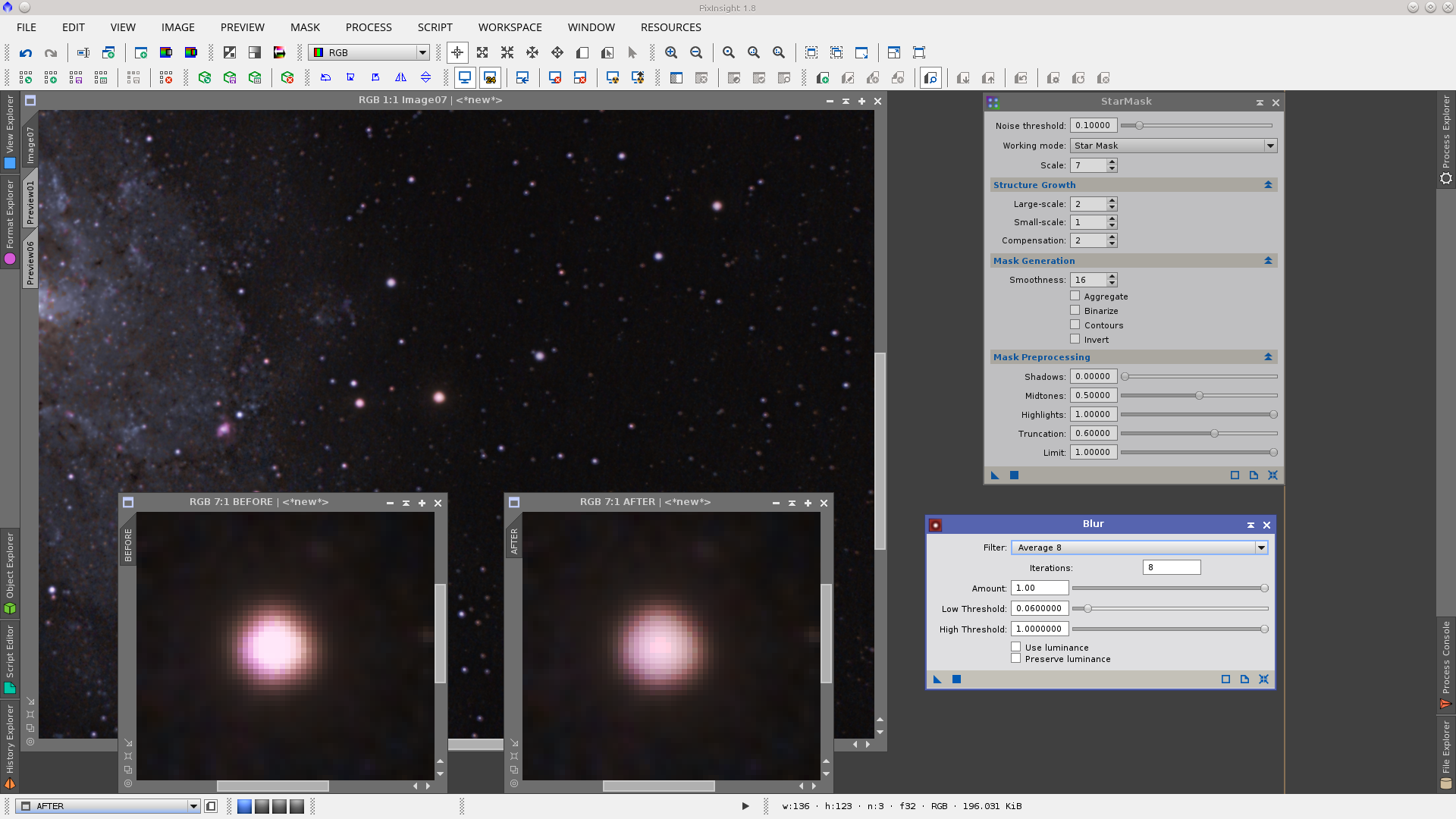
MultiscaleLinearTransformation to big scales the increase the bright in the galaxy and decrease in the background.

Using TGVInpaint I will correct the dark pixels in the backgroud. As they are in different position in each channel, the needed mask to use in TGVInpaint will be generated over the individual channels and the correction performed in three steps.
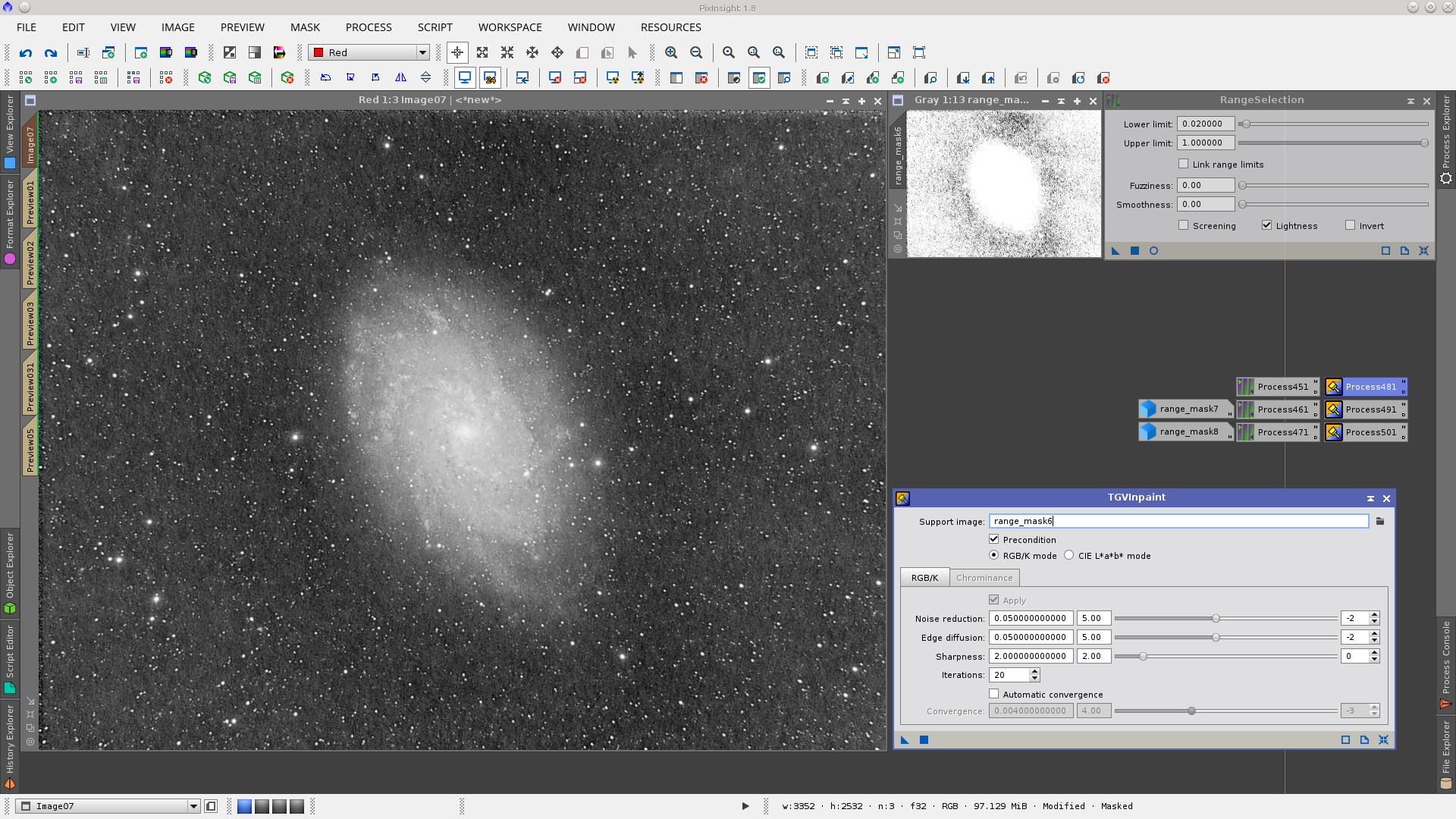
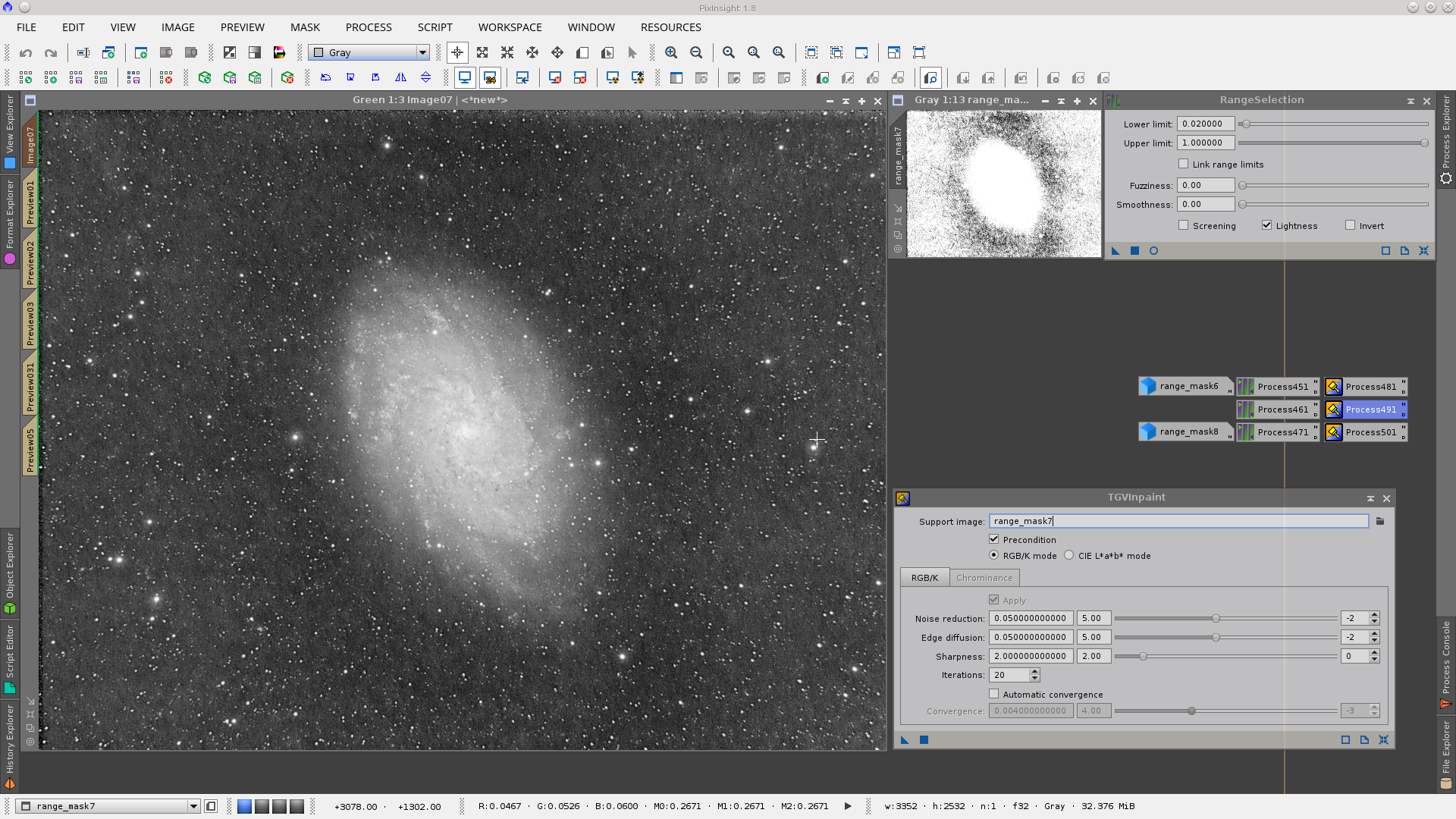
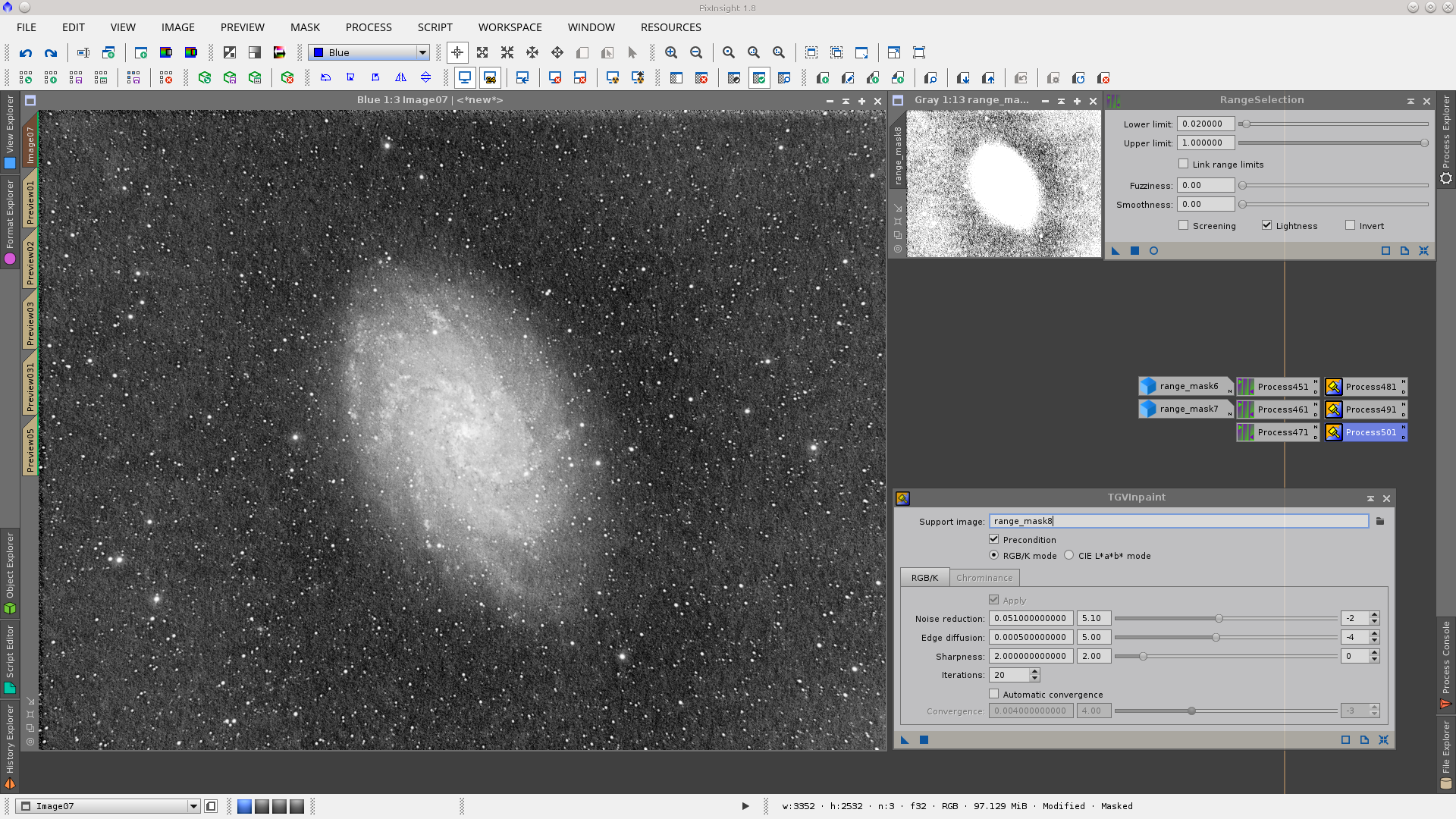
Background change before and after application of TGVInpaint
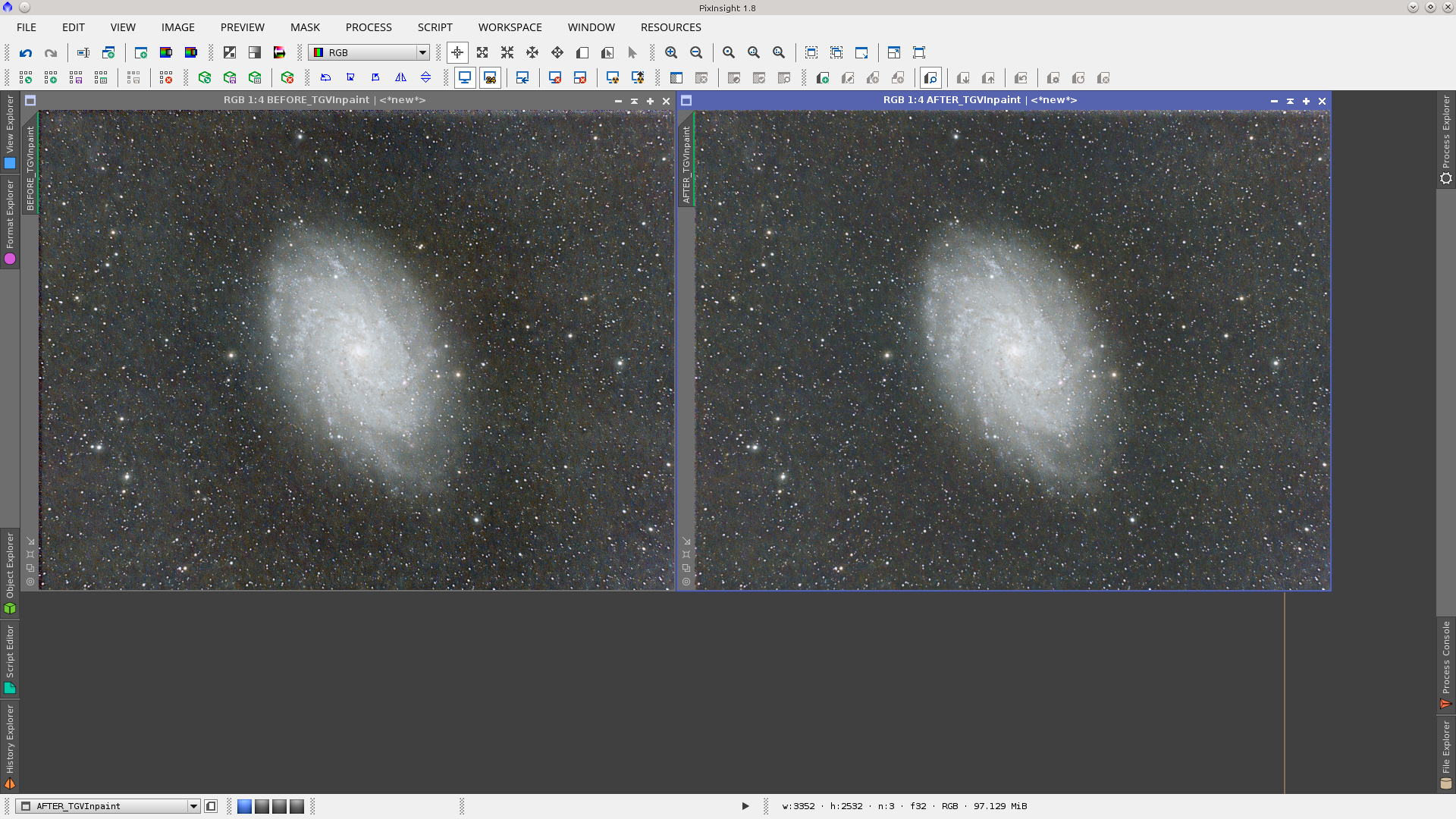
Besides I do not like too much, some times could be useful to add a little noise to improve the background. This is done with NoiseGeneration tool.
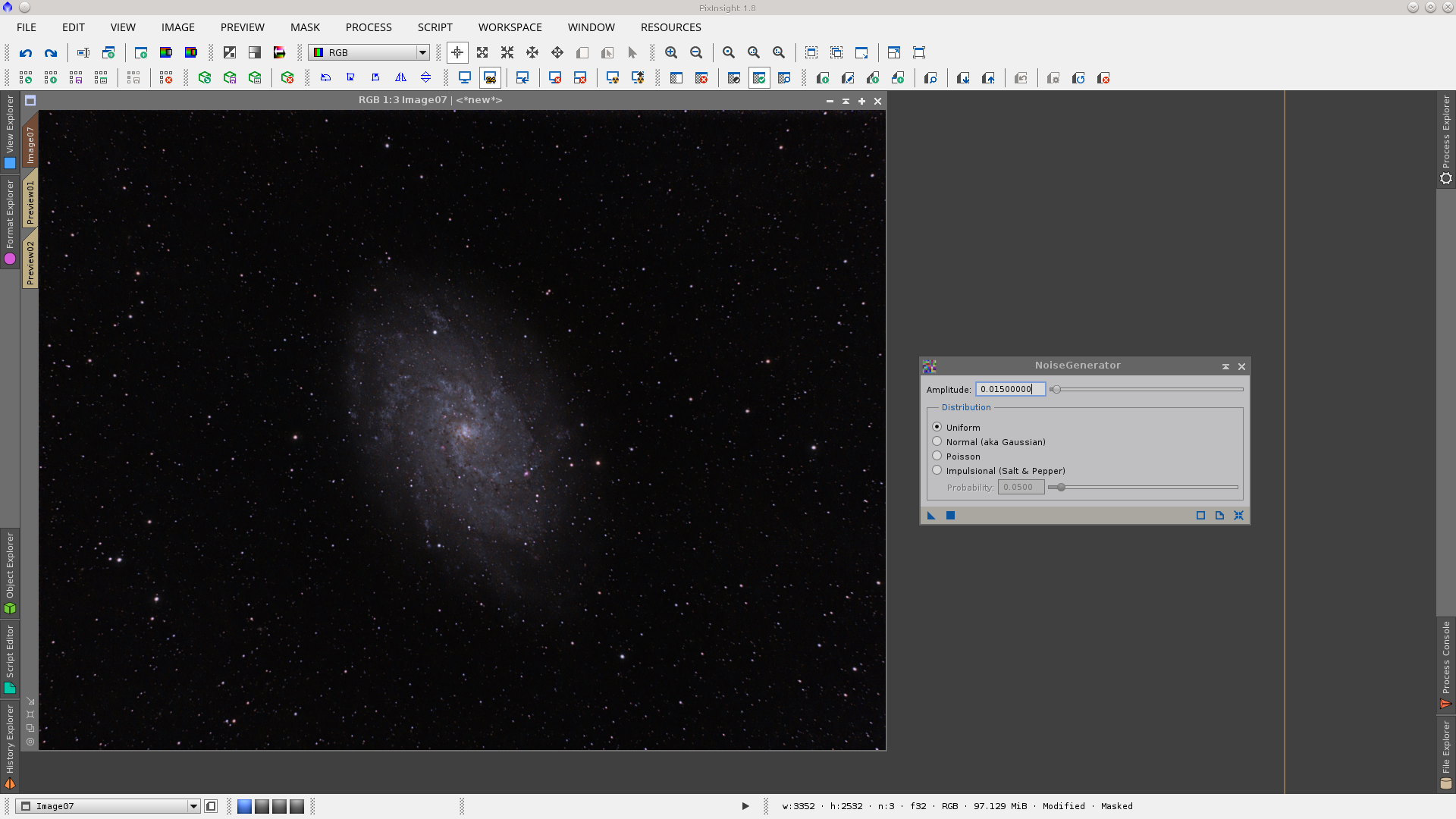
Final image
